Coworking Business Plan Template & PDF Example
- September 4, 2024
- Real Estate

Creating a comprehensive business plan is crucial for launching and running a successful coworking business. This plan serves as your roadmap, detailing your vision, operational strategies, and financial plan. It helps establish your coworking business’s identity, navigate the competitive market, and secure funding for growth.
This article not only breaks down the critical components of a coworking business plan but also provides an example of a business plan to help you craft your own.
Whether you’re an experienced entrepreneur or new to the real estate industry, this guide, complete with a business plan example, lays the groundwork for turning your coworking business concept into reality. Let’s dive in!
Our coworking business plan is designed to encapsulate all key facets essential for a robust strategy. It includes detailed descriptions of the coworking space’s operations, marketing strategies, market context, competitors, leadership team, and financial expectations.
- Executive Summary : Summarizes the coworking space’s business idea, market evaluation, management organization, and financial plan.
- Facility & Location: Describes the physical layout, design, and strategic location of the coworking space.
- Services: Details the range of services offered, including various seating options, meeting rooms, and additional amenities.
- Key Stats: Delivers statistics on the coworking market size , growth rates, and industry benchmarks.
- Key Trends: Identifies emerging trends influencing the coworking sector.
- Key Competitors: Compares major competitors, analyzing their offerings against yours.
- Differentiation: Explains how your coworking space stands apart from competitors.
- SWOT Analysis : Evaluates strengths, weaknesses, opportunities, and threats.
- Marketing Plan : Develops strategies for marketing and member engagement.
- Timeline : Charts significant milestones and targets from inception through the first operational year.
- Management: Details the coworking space’s management structure and the roles of key team members.
- Financial Plan: Forecasts the financial trajectory over five years, highlighting revenue streams, profit margins, and anticipated expenses.


Coworking Business Plan Template (Download)

Fully editable 30+ slides Powerpoint presentation business plan template.
Download an expert-built 30+ slides Powerpoint business plan template
Executive Summary
The Executive Summary introduces your coworking space’s business plan, offering a concise overview of your coworking facility and the services it provides. It should outline your market positioning, the variety of workspace solutions and amenities you offer, its location, size, and a description of day-to-day operations.
This section should also discuss how your coworking space will integrate into the local market, including an assessment of the number of direct competitors within the area, identifying who they are, along with your space’s unique selling points that differentiate it from these competitors.
Moreover, you should include information about the management and co-founding team, detailing their roles and contributions to the coworking space’s success. Additionally, a summary of your financial projections, including revenue and profits over the next five years, should be presented here to provide a clear picture of your coworking space’s financial plan.
Coworking Business Plan Executive Summary Example

Business Overview
The business overview should succinctly define the key aspects of CoWorkUSA, including its range of services, such as private offices, open spaces, and meeting rooms. Highlighting the unique aspects that set CoWorkUSA apart, like its community events, tech infrastructure, and eco-friendly design, is crucial for drawing interest and investment.
Example: CoWorkUSA, located in the heart of [City], offers a vibrant and innovative coworking environment. The space includes high-tech, eco-friendly designed private offices, open coworking areas, versatile meeting rooms, and event spaces. It also provides virtual services and fosters local partnerships, creating a dynamic and supportive community for its members.
Market Overview
This section should analyze the coworking market’s size, growth trends, and key industry developments. It positions CoWorkUSA within the industry and highlights its potential to meet the increasing demand for flexible workspaces.
Example: CoWorkUSA enters a US coworking market worth $4.6 billion, expected to grow at an 11% CAGR. With market trends favoring remote work and flexible office solutions, CoWorkUSA is well-positioned to cater to a growing segment of mobile professionals and businesses looking for adaptable workspace solutions.
Management Team
Detailing the management team’s background and roles is essential. This part of the summary should emphasize their experience in real estate, workspace design, and community building, underscoring their capability to lead CoWorkUSA to success.
Example: One co-founder of CoWorkUSA, an experienced entrepreneur with a background in real estate and community building, leads the strategic development of the space. The other co-founder, an expert in workspace design and technology, focuses on creating an innovative and efficient work environment.
Financial Plan
Clearly outlining the financial goals and projections is key. This section should include revenue targets and profit margins, offering insight into CoWorkUSA’s financial health and growth prospects.
Example: CoWorkUSA aims to achieve $1.8 million in yearly revenue by 2027. Supported by a strategic approach to space management, community engagement, and marketing, the coworking space is positioned for significant growth in the expanding coworking market.
For a coworking business, the Business Overview can be succinctly outlined as follows:
Facility & Location
Detail the coworking space’s design and atmosphere, emphasizing a productive and collaborative environment. Highlight the location’s accessibility and nearby amenities, underlining the strategic advantage in attracting freelancers, startups, and remote workers.
Services & Pricing
Explain the variety of workspace options, including hot desks, private offices, and meeting rooms, along with amenities like high-speed internet and communal spaces. Present the pricing strategy , emphasizing value and market alignment, and mention flexible membership plans to foster community and loyalty.

Industry Size & Growth
In the Market Overview of your coworking business plan, start by examining the size of the coworking space industry and its growth potential. This analysis is essential for understanding the market’s scope and pinpointing opportunities for expansion.
Key Market Trends
Continue by discussing recent market trends , such as the growing demand for flexible workspaces, the shift towards remote working, and the emphasis on community and networking opportunities within coworking spaces.Highlight the increasing preference for coworking spaces among freelancers, startups, and even large corporations looking for agility and innovation. Also, note the trend towards specialized coworking spaces catering to specific industries or professional needs, enhancing the value proposition for members.
Competitive Landscape
A competitive analysis is not just a tool for gauging the position of your coworking business in the market and its key competitors; it’s also a fundamental component of your business plan.
This analysis helps in identifying your coworking business’s unique selling points, which are essential for differentiating your business in a competitive market.
In addition, competitive analysis is integral in laying a solid foundation for your business plan. By examining various operational aspects of your competitors, you gain valuable information that ensures your business plan is robust, informed, and tailored to succeed in the current market environment.
Identifying Coworking Competitors
Begin by mapping out local and global coworking spaces. Identify direct competitors offering similar amenities and services, such as shared office spaces, meeting rooms, networking events, and specialized facilities like tech-equipped workstations or creative hubs.
Also, acknowledge indirect competitors such as traditional office spaces, home offices, or remote work setups, which might cater to your potential clientele. Leverage online platforms like Google Maps and coworking directories to gain insights into the geographical distribution and variety of coworking spaces.
Platforms like Coworker.com and Yelp not only provide listings but also offer valuable user reviews, highlighting the strengths and weaknesses of rival coworking spaces. For instance, positive reviews about the collaborative community and modern infrastructure at “Innovate Hub” signify a key strength of that particular competitor.

Coworking Competitors’ Strategies
Analyze the strategies employed by your competitors across various dimensions:
- Service Offerings: Assess the range of services and amenities provided. If a rival coworking space, “Tech Nexus CoLab,” is gaining traction for its high-speed internet and dedicated tech support, it reflects a trend toward tech-focused work environments.
- Space Design and Specialization: Consider the design ethos and specialization. A coworking space like “Creative Spark” might attract artists and designers with its vibrant, creatively themed interiors, while “Corporate Suites Inc.” might cater to professionals seeking a more corporate environment.
- Pricing Models: Compare pricing structures and membership plans. Are your rates similar to the budget-friendly options at “Economy CoWorks” or more aligned with premium offerings like “Executive Business Quarters”?
- Marketing and Branding: Study how competitors position and market themselves. Are they leveraging social media extensively, or do they rely on partnerships and industry events for brand exposure?
- Member Experience: Evaluate the member experience, such as the community vibe or additional perks. “CollabConnect” might excel at fostering a sense of belonging through regular networking events and member-exclusive workshops.
- Operational Efficiency: Observe if competitors are implementing innovative technologies for efficient space management, such as “SmartSpace Solutions” with its smart booking app and IoT-enabled workspace control.
What’s Your Coworking Service’s Value Proposition?
Define your unique value proposition within the coworking sphere. Perhaps your coworking space specializes in fostering niche communities like tech startups or social enterprises, or you might offer specialized facilities like podcasting studios or wellness areas that cater to specific professional needs.
Identify market gaps through member feedback and industry trends. For example, the rising demand for hybrid workspaces that blend physical and virtual experiences might represent an opportunity if competitors haven’t capitalized on this trend.
Consider your location and target audience preferences: A downtown coworking space might emphasize modern amenities and connectivity for professionals seeking convenience, whereas a suburban setting could focus on a serene environment and family-friendly workspace solutions.

First, conduct a SWOT analysis for the coworking business, highlighting Strengths (such as diverse workspace options and a strong community network), Weaknesses (including potential high overhead costs or market saturation), Opportunities (for example, the growing trend of remote work and the gig economy), and Threats (such as economic downturns that may reduce demand for office spaces).

Marketing Plan
Next, develop a marketing strategy that outlines how to attract and retain members through targeted advertising, flexible membership plans, a strong online presence, and networking events. Emphasize the importance of building a community and the value of added services and amenities to differentiate your coworking space from competitors.
Marketing Channels
Selecting the right marketing channels enables effective communication of your brand’s message and services to potential members, fostering brand awareness and engagement.
Digital Marketing
Establish a robust online presence:
- Social Media Platforms: Utilize platforms like LinkedIn, Twitter, and Instagram to showcase your space, share member success stories, and promote community events. Engage with the audience through relevant content and interactive posts.
- Website and SEO : Expand on the components of your website, emphasizing ease of navigation, compelling visuals, detailed membership plans, and a blog section offering valuable industry insights or workspace productivity tips. Detail SEO strategies including keyword research, content optimization, and local SEO tactics to boost your space’s visibility in search engine results pages (SERPs).
- Content Marketing: Create blog posts, e-books, or videos offering insights into workspace productivity, industry trends, or entrepreneurial tips, positioning your space as a knowledge hub.
Local Outreach
Forge connections within the local community:
- Networking Events: Host or sponsor networking events, workshops, or seminars catering to local professionals or entrepreneurs. Establish your space as a go-to venue for such gatherings.
- Partnerships: Collaborate with local businesses, startup incubators, or educational institutions for mutually beneficial partnerships or referral programs.
Physical Marketing
Utilize offline channels:
- Brochures and Flyers : Design eye-catching print materials to distribute in business districts, cafes, or industry-specific events.
- Local Advertising: Invest in local newspaper ads or radio spots to target a broader audience within your vicinity.
Promotional Activities
Entice potential members with compelling offers:
- Free Trial Days: O ffer a day or week of complimentary workspace access to allow prospective members to experience your facilities.
- Referral Programs: Incentivize existing members to refer new members by offering discounts on membership fees or additional perks.
- Events and Workshops : Host events or workshops relevant to your target audience , showcasing your space’s amenities, and fostering networking opportunities.

Sales Channels
Efficient sales channels facilitate seamless membership acquisition and retention strategies.
Consultative Selling
Personalized approach to membership sales:
- Tailored Solutions: Understand the unique needs of potential members and tailor membership plans or services accordingly.
- Trial Memberships: Elaborate on the structure and benefits of trial memberships offered by your coworking space. Detail the duration, access to amenities, and any additional perks during the trial period. Emphasize the objective of the trial memberships to give potential members a firsthand experience of the workspace, fostering trust and confidence in their decision to commit.
Online Booking and Sales
Streamline membership acquisition:
- User-Friendly Booking: Implement an intuitive online booking system allowing prospective members to explore available plans, and amenities, and book tours or memberships seamlessly.
- E-Commerce Integration : Allow online membership purchases and upgrades, making the signup process convenient for interested parties.
Membership and Retention Programs
Encourage member loyalty and retention:
- Membership Tiers: Create membership tiers with varying benefits, catering to different professional needs and budgets.
- Loyalty Rewards: Develop a rewards program where members earn points for engagement or referrals, redeemable for discounts or exclusive services.
- Networking Opportunities : Facilitate networking sessions, mentorship programs, or industry-specific events to foster a strong community within the coworking space.
Strategy Timeline
Finally, create a detailed timeline that outlines critical milestones for the coworking space’s launch, marketing initiatives, member acquisition, and potential expansion plans, ensuring the business progresses with clear direction and purpose.

The Management section focuses on the coworking business’s management and their direct roles in daily operations and strategic direction. This part is crucial for understanding who is responsible for making key decisions and driving the coworking business toward its financial and operational goals.
For your coworking business plan, list the core team members, their specific responsibilities, and how their expertise supports the business.

The Financial Plan section is a comprehensive analysis of your financial projections for revenue, expenses, and profitability. It lays out your coworking business’s approach to securing funding, managing cash flow, and achieving breakeven.
This section typically includes detailed forecasts for the first 5 years of operation, highlighting expected revenue, operating costs , and capital expenditures.
For your coworking business plan, provide a snapshot of your financial statement (profit and loss, balance sheet, cash flow statement), as well as your key assumptions (e.g. number of customers and prices, expenses, etc.).
Make sure to cover here _ Profit and Loss _ Cash Flow Statement _ Balance Sheet _ Use of Funds

Related Posts

Real Estate Broker Business Plan Template & PDF Example
- Business Plan

Home Inspection Business Plan Template & PDF Example

Competitive Analysis for a Real Estate Broker Business (Example)
- Business Plan , Competitive Analysis
Privacy Overview

Coworking Space Business Plan Template
Written by Dave Lavinsky

Coworking Space Business Plan
Over the past 20+ years, we have helped over 500 entrepreneurs and business owners create business plans to start and grow their coworking space companies.
If you’re unfamiliar with creating a coworking space business plan, you may think creating one will be a time-consuming and frustrating process. For most entrepreneurs it is, but for you, it won’t be since we’re here to help. We have the experience, resources, and knowledge to help you create a great business plan.
In this article, you will learn some background information on why business planning is important. Then, you will learn how to write a coworking space business plan step-by-step so you can create your plan today.
Download our Ultimate Business Plan Template here >
What is a Coworking Business Plan?
A business plan provides a snapshot of your coworking space business as it stands today, and lays out your growth plan for the next five years. It explains your business goals and your strategies for reaching them. It also includes market research to support your plans.
Why You Need a Business Plan for a Coworking Space
If you’re looking to start a coworking space business or grow your existing coworking space company, you need a business plan. A business plan will help you raise funding, if needed, and plan out the growth of your coworking space business to improve your chances of success. Your coworking space business plan is a living document that should be updated annually as your company grows and changes.
Sources of Funding for Coworking Space Businesses
With regards to funding, the main sources of funding for a coworking space business are personal savings, credit cards, bank loans, and angel investors. When it comes to bank loans, banks will want to review your business plan and gain confidence that you will be able to repay your loan and interest. To acquire this confidence, the loan officer will not only want to ensure that your financials are reasonable, but they will also want to see a professional plan. Such a plan will give them the confidence that you can successfully and professionally operate a business. Personal savings and bank loans are the most common funding paths for coworking space companies.
How to Write a Business Plan for a Coworking Space Business
If you want to start a coworking space business or expand your current one, you need a business plan. The guide below details the necessary information for how to write each essential component of your coworking space business plan.
Executive Summary
Your executive summary provides an introduction to your business plan, but it is normally the last section you write because it provides a summary of each key section of your plan.
The goal of your executive summary is to quickly engage the reader. Explain to them the kind of coworking space business you are running and the status. For example, are you a startup, do you have a coworking space business that you would like to grow, or are you operating a chain of coworking space businesses?
Next, provide an overview of each of the subsequent sections of your plan.
- Give a brief overview of the coworking space industry.
- Discuss the type of coworking space business you are operating.
- Detail your direct competitors. Give an overview of your target customers.
- Provide a snapshot of your marketing strategy. Identify the key members of your team.
- Offer an overview of your financial plan.
Company Overview
In your company overview, you will detail the type of coworking space business you are operating.
For example, you might specialize in one of the following types of coworking space businesses:
- Industry specialized coworking space: This type of coworking space caters to workers and entrepreneurs in a specific industry such as graphic designers, digital media professionals, or writers.
- Business incubator: This type of coworking space is specifically for startups and entrepreneurs to work on new business ventures in a supportive environment.
- Private coworking space: This type of coworking space is usually rented out by a single company.
- Open coworking space: This is the most common type of coworking space, where anyone can rent a desk or a room for a fee.
In addition to explaining the type of coworking space business you will operate, the company overview needs to provide background on the business.
Include answers to questions such as:
- When and why did you start the business?
- What milestones have you achieved to date? Milestones could include the number of clients served, the number of companies served, reaching $X amount in revenue, etc.
- Your legal business Are you incorporated as an S-Corp? An LLC? A sole proprietorship? Explain your legal structure here.
Coworking Space Company Overview Example
Welcome to WorkHub Spaces, a new Coworking Space uniquely positioned to serve customers in Pasadena, CA. As a local coworking space, we have noticed a significant gap in the market for high-quality local coworking spaces in the area, and we are here to fill that void. We provide a community-driven environment where professionals, freelancers, and startups can find a flexible and inspiring place to work and connect.
At WorkHub Spaces, we offer a variety of products and services designed to meet the needs of our diverse clientele. Our offerings include Hot Desks, for those who need a flexible workspace on the go, Dedicated Desks for individuals seeking a more permanent spot, and Private Offices for teams or individuals needing privacy. Additionally, we provide Meeting and Conference Rooms equipped with modern technology for presentations and collaborations, as well as Virtual Office Services for businesses that require a professional address and mail handling without the need for a physical office space.
Located in the heart of Pasadena, CA, WorkHub Spaces is perfectly situated to serve customers from the local area. Our prime location is not only convenient but also contributes to the vibrant, innovative atmosphere that Pasadena is known for.
Our unique qualifications for success stem from a combination of factors. Firstly, our founder brings valuable experience from previously running a successful coworking space, ensuring we understand the nuances of creating a thriving coworking community. Moreover, our commitment to providing flexible and comprehensive solutions sets us apart, enabling us to meet the diverse needs of our members more effectively than our competition, and fostering an environment of productivity and collaboration.
Since our founding on January 7, 2024, WorkHub Spaces has taken significant strides toward establishing itself as a premier coworking space in Pasadena, CA. We are proud to be structured as an S Corporation, reflecting our commitment to professional and structured business operations. Our achievements to date include the creation of our distinct logo, the development of our unique company name, and securing an ideal location that resonates with our vision for a collaborative, inspiring workspace. These accomplishments mark just the beginning of our journey to becoming a cornerstone of the Pasadena business community.
Industry Analysis
In your industry or market analysis, you need to provide an overview of the coworking space industry.
While this may seem unnecessary, it serves multiple purposes.
First, researching the coworking space industry educates you. It helps you understand the market in which you are operating.
Secondly, market research can improve your marketing strategy, particularly if your analysis identifies market trends.
The third reason is to prove to readers that you are an expert in your industry. By conducting the research and presenting it in your plan, you achieve just that.
The following questions should be answered in the industry analysis section of your coworking space business plan:
- How big is the coworking space industry (in dollars)?
- Is the market declining or increasing?
- Who are the key competitors in the market?
- Who are the key suppliers in the market?
- What trends are affecting the industry?
- What is the industry’s growth forecast over the next 5 – 10 years?
- What is the relevant market size? That is, how big is the potential target market for your coworking space business? You can extrapolate such a figure by assessing the size of the market in the entire country and then applying that figure to your local population.
Coworking Space Industry Analysis Example
The Coworking Space industry in the United States has seen significant growth in recent years, with the market size reaching an estimated $1.2 billion in 2021. This growth can be attributed to the increasing number of freelancers, remote workers, and small businesses looking for flexible and affordable workspace solutions.
Looking ahead, the Coworking Space industry is expected to continue its upward trajectory, with market research predicting a compound annual growth rate of 6.5% from 2021 to 2026. This projected growth is driven by the rising demand for flexible workspaces, as well as the trend towards remote work and the gig economy.
These trends in the Coworking Space industry bode well for WorkHub Spaces, a new Coworking Space serving customers in Pasadena, CA. As more individuals and businesses seek out flexible workspace solutions, WorkHub Spaces is well-positioned to capitalize on this growing market. By offering modern amenities, a collaborative environment, and affordable pricing, WorkHub Spaces can attract a diverse range of customers and establish itself as a premier Coworking Space in the Pasadena area.
Customer Analysis
The customer analysis section of your coworking space business plan must detail the customers you serve and/or expect to serve.
The following are examples of customer segments: individuals, schools, families, and corporations.
As you can imagine, the customer segment(s) you choose will have a great impact on the type of coworking space business you operate. Clearly, individuals would respond to different marketing promotions than corporations, for example.
Try to break out your target customers in terms of their demographic and psychographic profiles. With regards to demographics, including a discussion of the ages, genders, locations, and income levels of the potential customers you seek to serve.
Psychographic profiles explain the wants and needs of your target customers. The more you can recognize and define these needs, the better you will do in attracting and retaining your customers.
Coworking Space Customer Analysis Example
Target Customers
We will target local entrepreneurs and freelancers who require a flexible and professional working environment. These individuals often seek cost-effective alternatives to traditional office spaces and will benefit from our adaptable membership plans. Our facilities will provide them with the necessary resources and networking opportunities to thrive in their respective industries.
In addition to entrepreneurs and freelancers, we will cater to remote workers employed by larger companies, who seek a productive environment away from home distractions. Our coworking space will offer them the collaboration and social interaction that are often missing from remote work. This segment will appreciate our modern amenities and community-driven atmosphere.
Startups and small businesses will also be a key target for our services, as they often require scalable office solutions that can grow with their needs. We will tailor our offerings to support these young companies with meeting rooms, event spaces, and technology infrastructure that facilitate innovation and business growth. This customer segment will benefit from the potential for collaboration with like-minded businesses within our coworking community.
Furthermore, we will aim to attract students and academics from nearby educational institutions, who need a conducive environment for study and research. By providing quiet zones and resources like high-speed internet and printing facilities, we will meet their academic needs. This segment will appreciate the opportunity to connect with a diverse group of professionals and enhance their learning experience.
Customer Needs
WorkHub Spaces serves as a hub for professionals seeking high-quality coworking environments that foster productivity and collaboration. Customers expect an inspiring and ergonomic workspace, equipped with state-of-the-art technology, reliable high-speed internet, and ample meeting rooms. The space caters to entrepreneurs, freelancers, and remote workers who value flexibility and community.
Networking opportunities are a crucial need fulfilled by WorkHub Spaces, as customers benefit from interacting with a diverse group of professionals. Members enjoy access to workshops, events, and seminars that enhance their skills and foster business growth. This environment supports not only individual productivity but also the potential for collaborative ventures and partnerships.
Finish Your Coworking Space Business Plan in 1 Day!
Don’t you wish there was a faster, easier way to finish your business plan?
With Growthink’s Ultimate Business Plan Template you can finish your plan in just 8 hours or less!
Competitive Analysis
Your competitive analysis should identify the indirect and direct competitors your business faces and then focus on the latter.
Direct competitors are other coworking space businesses.
Indirect competitors are other options that customers have to purchase from that aren’t directly competing with your product or service. This includes other places people gather to work, such as conference rooms, libraries, and coffee shops. You need to mention such competition as well.
For each such competitor, provide an overview of their business and document their strengths and weaknesses. Unless you once worked at your competitors’ businesses, it will be impossible to know everything about them. But you should be able to find out key things about them such as
- What types of customers do they serve?
- What type of coworking space business are they?
- What is their pricing (premium, low, etc.)?
- What are they good at?
- What are their weaknesses?
With regards to the last two questions, think about your answers from the customers’ perspective. And don’t be afraid to ask your competitors’ customers what they like most and least about them.
The final part of your competitive analysis section is to document your areas of competitive advantage. For example:
- Will you make it easier for your clients to acquire your services?
- Will you offer products or services that your competition doesn’t?
- Will you provide better customer service?
- Will you offer better pricing?
Think about ways you will outperform your competition and document them in this section of your plan.
Marketing Plan
Traditionally, a marketing plan includes the four P’s: Product, Price, Place, and Promotion. For a coworking space business plan, your marketing strategy should include the following:
Product : In the product section, you should reiterate the type of coworking space company that you documented in your company overview. Then, detail the specific products or services you will be offering. For example, will you provide food and beverages, hot desks, conference rooms, or fitness rooms?
Price : Document the prices you will offer and how they compare to your competitors. Essentially in the product and price sub-sections of your plan, you are presenting the services you offer and their prices.
Place : Place refers to the site of your coworking space company. Document where your company is situated and mention how the site will impact your success. For example, is your coworking space business located in a busy retail district, a business district, or a standalone office? Discuss how your site might be the ideal location for your customers.
Promotions : The final part of your coworking space marketing plan is where you will document how you will drive potential customers to your location(s). The following are some promotional methods you might consider:
- Advertise in local papers, radio stations and/or magazines
- Reach out to websites
- Distribute flyers
- Engage in email marketing
- Advertise on social media platforms
- Improve the SEO (search engine optimization) on your website for targeted keywords
Operations Plan
While the earlier sections of your business plan explained your goals, your operations plan describes how you will meet them. Your operations plan should have two distinct sections as follows.
Everyday short-term processes include all of the tasks involved in running your coworking space business, including answering calls, scheduling cleaning services for the coworking space, ordering office supplies, and collecting payments from clients, etc.
Long-term goals are the milestones you hope to achieve. These could include the dates when you expect to book your Xth client, or when you hope to reach $X in revenue. It could also be when you expect to expand your coworking space business to a new city.
Coworking Space Operations Plan Example
Key Operational Processes
To ensure the success of WorkHub Spaces, there are several key day-to-day operational processes that we will perform:
- Maintain a clean and organized workspace by performing daily cleaning duties and regular maintenance checks.
- Manage bookings and reservations efficiently through a user-friendly online platform to ensure optimal space utilization.
- Provide excellent customer service by greeting members and visitors, addressing inquiries, and resolving any issues promptly.
- Offer high-speed internet and reliable connectivity by monitoring network performance and quickly addressing any technical issues.
- Ensure safety and security by implementing access control systems and conducting regular security checks.
- Foster a vibrant community by organizing networking events, workshops, and seminars to encourage collaboration and engagement.
- Handle financial transactions accurately by processing payments and managing invoicing for memberships and services.
- Track and manage inventory, including office supplies and equipment, to ensure availability and functionality.
- Maintain a welcoming atmosphere by managing temperature, lighting, and seating arrangements to enhance comfort.
- Collect feedback from members to continually assess and improve services and facilities.
- Coordinate with vendors and service providers to ensure timely delivery and maintenance of essential services.
- Promote the coworking space through marketing efforts, including social media engagement and partnerships with local businesses.
- Monitor and analyze operational data to identify areas for improvement and implement necessary changes.
WorkHub Spaces expects to complete the following milestones in the coming months to ensure its success:
- Secure a Prime Location : Identify and lease a strategically located property in Pasadena, CA, that is accessible, spacious, and appealing to the target market.
- Design and Build-Out : Complete the interior design and renovation of the space, ensuring it meets the needs of coworking clientele, including amenities such as high-speed internet, conference rooms, and comfortable workstations.
- Obtain Necessary Permits and Licenses : Acquire all local and state permits and licenses required to legally operate a coworking space in Pasadena.
- Develop a Marketing and Sales Strategy : Launch targeted marketing campaigns to create awareness and attract potential members, including digital marketing, partnerships with local businesses, and attending networking events.
- Launch Our Coworking Space : Officially open the doors to WorkHub Spaces, hosting a launch event to generate buzz and attract initial members.
- Build a Strong Community : Facilitate community-building activities and events to foster a collaborative environment and increase member retention.
- Implement Member Feedback Mechanisms : Establish systems for collecting and responding to member feedback to continuously improve the coworking experience.
- Optimize Operational Efficiency : Streamline operations to reduce costs and enhance member satisfaction, including the use of technology for bookings and member management.
Management Team
To demonstrate your coworking space business’ potential to succeed, a strong management team is essential. Highlight your key players’ backgrounds, emphasizing those skills and experiences that prove their ability to grow a company.
Ideally, you and/or your team members have direct experience in managing coworking space businesses. If so, highlight this experience and expertise. But also highlight any experience that you think will help your business succeed.
If your team is lacking, consider assembling an advisory board. An advisory board would include 2 to 8 individuals who would act as mentors to your business. They would help answer questions and provide strategic guidance. If needed, look for advisory board members with experience in managing a coworking space business or successfully running a small venture incubator.
Financial Plan
Your financial plan should include your 5-year financial statement broken out both monthly or quarterly for the first year and then annually. Your financial statements include your income statement, balance sheet, and cash flow statements.
Income Statement
An income statement is more commonly called a Profit and Loss statement or P&L. It shows your revenue and then subtracts your costs to show whether you turned a profit or not.
In developing your income statement, you need to devise assumptions. For example, will your coworking space have 20 desks, and will you charge $20 per day/per desk? And will sales grow by 2% or 10% per year? As you can imagine, your choice of assumptions will greatly impact the financial forecasts for your business. As much as possible, conduct research to try to root your assumptions in reality.
Balance Sheets
Balance sheets show your assets and liabilities. While balance sheets can include much information, try to simplify them to the key items you need to know about. For instance, if you spend $50,000 on building out your coworking space business, this will not give you immediate profits. Rather it is an asset that will hopefully help you generate profits for years to come. Likewise, if a lender writes you a check for $50,000, you don’t need to pay it back immediately. Rather, that is a liability you will pay back over time.
Cash Flow Statement
Your cash flow statement will help determine how much money you need to start or grow your business, and ensure you never run out of money. What most entrepreneurs and business owners don’t realize is that you can turn a profit but run out of money and go bankrupt.
When creating your Income Statement and Balance Sheets be sure to include several of the key costs needed in starting or growing a coworking space business:
- Cost of equipment and office supplies
- Payroll or salaries paid to staff
- Business insurance
- Other start-up expenses (if you’re a new business) like legal expenses, permits, computer software, and equipment
Attach your full financial projections in the appendix of your plan along with any supporting documents that make your plan more compelling. For example, you might include your office location lease or testimonials from happy customers.
Writing a business plan for your coworking space is a worthwhile endeavor. If you follow the template above, by the time you are done, you will have an expert coworking space business plan; download it to PDF to show banks and investors. You will understand the coworking space industry, your competition, and your customers. You will develop a marketing strategy and will understand what it takes to launch and grow a successful coworking space business.
Don’t you wish there was a faster, easier way to finish your Coworking Space business plan?
OR, Let Us Develop Your Plan For You
Since 1999, Growthink has developed business plans for thousands of companies who have gone on to achieve tremendous success.
See how a Growthink business planning consultant can create your business plan for you.
Other Helpful Business Plan Articles & Templates

Coworking Space Business Plan
Are you ready to capitalize on the growing trend of flexible workspaces and start a coworking space business? In today’s dynamic work environment, the demand for collaborative and adaptable workspaces is on the rise. Coworking spaces offer a solution that blends flexibility, community, and innovation, catering to the diverse needs of modern professionals. Crafting a well-structured coworking space business plan is essential for launching and managing a successful coworking business. This guide will walk you through the crucial elements of a coworking space business plan and provide insights into creating a thriving coworking space.
What is a Coworking Space Business Plan?
A coworking business plan is not just a document; it’s a strategic blueprint that outlines how to establish and operate a coworking space. It serves as a roadmap for achieving business goals, securing financing, and guiding daily operations. Understanding the fundamentals of the coworking space business model is key to developing a successful plan coworking space.
Understanding the Coworking Space Business Model
The coworking business model centers around providing flexible, shared workspaces for individuals and companies. Unlike traditional office settings, coworking spaces offer a variety of membership options, such as hot desks, dedicated desks, and private offices. These spaces are designed to meet the needs of freelancers, startups, and established businesses seeking a collaborative environment. Whether you’re looking to start coworking space or seeking inspiration from places like WeWork or co space working, understanding this model is crucial.
Commercial Office Space Business Model Canvas
A commercial office space business model canvas is a visual framework that outlines the essential components of the coworking space business. This canvas includes elements such as customer segments, value propositions, revenue streams, and key resources. It helps in identifying the core aspects of the business and aligning them with market needs.
For those considering expanding their coworking space plans to include events, an event space business plan template or event venue business plan PDF can be invaluable resources. Moreover, leveraging [affordable hot desk office] and exploring strategic partnerships in cheap office space for startups can further enhance the success of your coworking business.
Whether you’re drafting a business plan template PDF download or working on a wework email format strategy, this comprehensive guide will help you navigate the complexities of how to start a coworking space business. For more detailed planning, consider utilizing a ramp up plan template or a budgetplan vorlage to ensure your coworking space is well-prepared for launch and sustainable growth.
Coworking Space Business Plan Sample
1.0 executive summary.
“The Work Nest” (herein also referred to as “Work Nest” and “the company”) was established in 2024 by a group of experienced entrepreneurs. The company is focused on creating a flexible and collaborative workspace in downtown Toronto, designed to cater to the needs of freelancers, startups, and small to medium-sized enterprises. Work Nest offers a wide array of services, including shared workspaces, private offices, meeting rooms, and event spaces, all within a vibrant and community-oriented environment.
Work Nest’s business model is thoughtfully designed to meet the growing demand for adaptable work environments. By offering diverse membership options and a variety of professional services, the company is able to attract a broad clientele, ranging from solo entrepreneurs to expanding teams. The model emphasizes not just workspace availability but also the value of networking and professional development, fostering a sense of community among members. This strategy ensures a stable and growing revenue stream while building a strong brand presence in the market.
To support its expansion plans, Work Nest is seeking a $150,000 investment. The funds will be used to enhance the existing facilities, including the acquisition of advanced technology tools, as well as to expand marketing initiatives aimed at increasing brand recognition and membership growth. Additionally, the investment will allow the company to introduce new services, such as virtual office packages and specialized business workshops, further solidifying its market position.
Under the strategic leadership of its founders, Work Nest has quickly become a key player in Toronto’s coworking industry. The founders’ combined expertise in entrepreneurship and business development has been instrumental in shaping the company’s success. With a focus on delivering high-quality services and fostering a supportive community, Work Nest is poised for continued growth in the dynamic coworking market.
2.0 Business Overview
The Work Nest operates a comprehensive coworking business model designed to meet the evolving needs of freelancers, startups, and small to medium-sized enterprises. The company provides a dynamic workspace solution in downtown Toronto, offering a variety of services, including shared workspaces, private offices, meeting rooms, and event spaces. The target market consists of professionals and businesses seeking a flexible and collaborative environment to enhance productivity and innovation.
Work Nest’s offerings are tailored to cater to a diverse clientele, providing a seamless blend of professional resources and community-oriented support. The company’s facilities are equipped with state-of-the-art technology and amenities that facilitate a productive work environment. Work Nest also places a strong emphasis on fostering a sense of community among members, encouraging networking, collaboration, and professional development through various events and programs.
To further diversify revenue streams and enhance member experience, The Work Nest offers additional services such as virtual office packages, specialized business workshops, and concierge services. These services are designed to provide members with the tools and support needed to grow their businesses, positioning Work Nest as a central hub for entrepreneurial success in Toronto.
2.1 Mission Statement
The mission of Work Nest is to provide a vibrant, flexible, and supportive workspace that empowers professionals and businesses to thrive. The company is dedicated to fostering a collaborative environment where creativity, productivity, and innovation can flourish.
2.2 Vision Statement
Work Nest aims to become the leading coworking space provider in Toronto, recognized for its exceptional service, innovative workspace solutions, and commitment to building a strong community of professionals and entrepreneurs.
2.3 Core Values
The Work Nest’s culture is rooted in core values that guide all business activities and interactions with members, partners, and the community. These values are integral to the company’s success and growth.
- Innovation: The Work Nest is committed to continuously evolving its workspace offerings to meet the changing needs of modern professionals. The company embraces creativity and innovation in all aspects of its operations.
- Community: Building a strong, supportive community is at the heart of Work Nest’s mission. The company believes in fostering connections and collaboration among members to create a thriving ecosystem.
- Quality: Work Nest is dedicated to maintaining the highest standards of quality in its facilities, services, and member experience. Every detail is carefully managed to ensure an optimal workspace environment.
- Integrity: The company conducts all business activities with transparency, honesty, and ethical practices. Work Nest values the trust of its members and partners and works diligently to maintain it.
- Customer Focus: The needs and satisfaction of members are the primary focus of Work Nest. The company listens to member feedback, anticipates requirements, and strives to exceed expectations in all services offered.
2.4 Goals and Objectives
3.0 market analysis.
The coworking space industry has seen rapid growth in recent years, driven by a shift in the traditional work environment. Increasing numbers of freelancers, startups, and even established companies are seeking flexible workspace solutions that foster collaboration and innovation. This trend has been accelerated by the rise of remote work, especially post-pandemic, as businesses look to reduce overhead costs while providing employees with dynamic workspaces.
Vancouver, in particular, has emerged as a key market for coworking spaces due to its vibrant startup ecosystem, diverse business community, and high concentration of creative professionals. The demand for flexible office spaces in the city is expected to continue growing as more businesses embrace hybrid work models.
3.1 Market Trends
Several key trends are shaping the coworking space market:
- Hybrid Work Models: As businesses adopt hybrid work models, the demand for flexible and adaptable office spaces is increasing. Coworking spaces provide the perfect solution for companies looking to offer employees the flexibility of remote work combined with the benefits of a collaborative office environment.
- Niche Coworking Spaces: There is a growing trend towards niche coworking spaces that cater to specific industries or communities, such as tech startups, creative professionals, or women-led businesses. These spaces offer tailored amenities and networking opportunities that align with the needs of their target audience.
- Sustainability Focus: Many coworking spaces are incorporating sustainable practices into their operations, such as using eco-friendly materials, promoting energy efficiency, and offering green certifications. This trend aligns with the increasing demand for environmentally responsible business practices.
- Technology Integration: Advanced technology is becoming a critical component of coworking spaces. High-speed internet, smart office solutions, and integrated communication tools are now essential features that attract businesses to coworking environments.
3.2 Government Regulations
The coworking space industry is subject to a range of government regulations, particularly in terms of zoning laws, building codes, and health and safety standards.
- Zoning and Land Use: Local zoning regulations determine where coworking spaces can be established. In Vancouver, commercial zoning laws typically govern the location of coworking spaces, ensuring they are situated in areas designated for business use.
- Building Codes: Coworking spaces must comply with local building codes, which set standards for construction, occupancy, fire safety, accessibility, and other structural requirements. These regulations are enforced to ensure the safety and well-being of occupants.
- Health and Safety Regulations: Given the ongoing impact of the COVID-19 pandemic, coworking spaces must adhere to stringent health and safety guidelines, including social distancing protocols, sanitation measures, and air quality standards.
- Licensing and Permits: Operators of coworking spaces must obtain the necessary business licenses and permits from local authorities. This includes ensuring compliance with tax obligations and registering the business with relevant government bodies.
3.3 Competitive Analysis
The coworking space market in Vancouver is highly competitive, with several established players offering a range of services to meet the diverse needs of businesses. Below is an analysis of three key competitors:
4.0 Products and Services
Work Nest offers a range of flexible workspace solutions designed to meet the diverse needs of modern professionals and businesses. The key products and services include:
- Hot Desks: Designed for freelancers and remote workers who need a flexible and cost-effective workspace, hot desks provide access to a shared desk in an open-plan environment. Users can choose any available desk, fostering a dynamic and collaborative atmosphere.
- Dedicated Desks: For professionals who require a consistent workspace, dedicated desks offer a reserved spot in a shared area. This option is ideal for individuals who need a stable workspace with the added benefit of community interaction.
- Private Offices: Catering to small teams and businesses seeking privacy, Work Nest offers fully furnished private offices. These spaces come equipped with all necessary amenities, including high-speed internet, ergonomic furniture, and access to communal facilities.
- Meeting Rooms: Work Nest provides well-appointed meeting rooms that can be booked by the hour or day. These rooms are equipped with advanced audiovisual technology, allowing clients to conduct presentations, workshops, or client meetings in a professional setting.
- Virtual Office Services: For businesses that do not require physical office space, Work Nest offers virtual office packages, including mail handling, phone answering services, and access to meeting rooms when needed.
- Event Spaces: Work Nest also offers event spaces that can be rented for corporate events, workshops, and networking sessions. These spaces are designed to accommodate various group sizes and come with customizable seating arrangements and technical support.
- Community and Networking Opportunities: As part of the Work Nest membership, clients gain access to a thriving professional community. Regular events, workshops, and networking opportunities are organized to help members connect, collaborate, and grow their businesses.
5.0 Sales and Marketing Plan
Work Nest aims to establish itself as a premier coworking space provider in Vancouver by implementing a targeted sales and marketing strategy. This strategy focuses on identifying the right market segments, employing effective marketing channels, and leveraging the company’s unique value propositions.
5.1 Target Market
Work Nest’s target market includes:
- Freelancers and Remote Workers: Individuals seeking flexible workspaces that offer a professional environment without the commitment of a traditional office lease.
- Startups and Small Businesses: Emerging companies that require affordable office space with opportunities for networking, collaboration, and scaling their operations.
- Corporate Teams: Large companies that are adopting hybrid work models and need satellite offices or temporary workspaces for their employees.
- Creative Professionals: Designers, artists, and media professionals who value inspiring and well-equipped environments tailored to their specific needs.
- Event Organizers: Businesses and individuals seeking a versatile and professional venue for hosting corporate events, workshops, and networking sessions.
5.2 Marketing Strategies
Work Nest will implement a multi-faceted marketing approach to reach its target market and build brand recognition:
- Digital Marketing: Utilize SEO-optimized content, targeted social media advertising, and Google Ads to attract potential clients searching for coworking spaces in Vancouver. Regular blog posts and email newsletters will be used to engage with the community and provide value-added content.
- Local Partnerships: Establish partnerships with local businesses, tech hubs, and startup incubators to drive referrals and build a network of collaborators. Work Nest will also participate in local business events and expos to increase visibility within the community.
- Content Marketing: Develop a robust content marketing strategy that includes thought leadership articles, case studies, and video testimonials showcasing the benefits of coworking at Work Nest. This content will be shared across the company’s website, social media platforms, and industry forums.
- Referral Program: Implement a referral program that incentivizes existing members to refer new clients to Work Nest. Rewards such as discounts on membership fees or free meeting room hours will be offered to those who successfully refer others.
- Public Relations: Engage with local media outlets to secure coverage in business journals, newspapers, and online publications. Work Nest will also host press events and tours to introduce journalists and influencers to the space and its offerings.
5.3 SWOT Analysis
6.0 operational plan.
The operational plan for Work Nest outlines the essential actions required to ensure that the coworking space operates smoothly and effectively. This section provides a detailed overview of daily activities, including hours of operation, location, procurement strategies, and compliance with relevant regulations.
6.1 Hours of Operation
6.2 location.
Work Nest operates at 1200 Main Street in the heart of the city, providing a strategic location that is easily accessible to professionals, entrepreneurs, and freelancers. The space is situated within a vibrant business district, surrounded by cafes, restaurants, and public transportation, making it a convenient choice for members.
The facility features modern workspaces, meeting rooms, and communal areas, all designed to foster collaboration and productivity. Additionally, there is ample parking available, ensuring that members and visitors can easily access the premises.
6.3 Procurement Plan
To maintain a high standard of service and continually improve the coworking experience, Work Nest has developed a strategic procurement plan. The plan includes acquiring state-of-the-art office furniture, high-speed internet infrastructure, and advanced security systems to ensure a comfortable and secure environment for all members.
Additionally, the plan prioritizes the regular upgrading of technology and amenities, such as printers, projectors, and kitchen equipment, to meet the evolving needs of members. Work Nest will also establish partnerships with local suppliers to source sustainable and ergonomic office furniture, enhancing both the functionality and aesthetic appeal of the space.
6.4 Risk Analysis
7.0 organizational plan.
The organizational plan for Work Nest outlines the company’s approach to managing human capital, ensuring effective leadership, and maintaining operational efficiency. This plan is designed to be flexible and will be periodically reviewed to ensure that Work Nest remains adaptive and responsive to emerging opportunities and challenges in the coworking industry.
Organizational Structure
Work Nest has implemented a structured organizational hierarchy to ensure smooth operations, clear communication, and effective management. This structure promotes collaboration among teams and establishes clear lines of authority to facilitate decision-making and operational efficiency.
Personnel Plan
The personnel plan for Work Nest defines the roles, duties, and responsibilities of each key position within the company. This plan ensures efficient management and accountability, contributing to the overall success and growth of the coworking space.
Chief Executive Officer (CEO)
- Oversees the overall operations, strategy, and vision of Work Nest.
- Makes high-level decisions and manages the leadership team.
- Represents Work Nest to stakeholders, partners, and the broader community.
Operations Manager
- Manages the day-to-day operations of the coworking space, ensuring a seamless experience for members.
- Ensures compliance with safety regulations and maintains the facility.
- Coordinates with vendors and oversees procurement and inventory management.
Community Manager
- Focuses on building and maintaining a vibrant community within Work Nest.
- Organizes events, networking opportunities, and community-building activities.
- Manages member relations and ensures a positive coworking experience.
Financial Manager
- Manages budgeting, financial planning, and financial reporting for Work Nest.
- Oversees accounts payable and receivable, and ensures financial health.
- Provides financial analysis to support strategic decision-making.
Administrative Assistant
- Provides administrative support to the CEO and other team members.
- Manages scheduling, correspondence, and overall office organization.
- Assists with record-keeping, document management, and member inquiries.
Sales Manager
- Drives membership growth through sales strategies and outreach efforts.
- Manages the member acquisition process and works to retain existing members.
- Develops and executes sales campaigns to meet growth targets.
Marketing Specialist
- Develops and implements marketing strategies to promote Work Nest and attract new members.
- Manages social media channels, email marketing, and promotional activities.
- Analyzes marketing performance and adjusts tactics to enhance brand visibility.
IT Specialist
- Manages and maintains Work Nest’s IT systems and technology infrastructure.
- Supports the integration of new software and technology solutions.
- Ensures the effective operation of coworking technology, including Wi-Fi, booking systems, and security systems.
8.0 Financial Plan
The following financial projections have been carefully crafted by the management team of the company. All projections are forward-looking and are dependent on securing the required financing. It is the audience’s responsibility to conduct all necessary due diligence.
8.1 Pro Forma Income Statement

8.2 Pro Forma Cash Flow Statement

8.3 Pro Forma Balance Sheet

A well-developed coworking space business plan is essential for successfully launching and managing a coworking space. By addressing key components such as market analysis, products and services, and financial planning, entrepreneurs can create a solid foundation for their business. Whether starting a coworking space business or refining an existing plan, staying informed about industry trends and adapting to market demands will be crucial for long-term success.
For expert assistance in developing a comprehensive coworking space plan, consider consulting with professional business plan writers. By following these guidelines and utilizing available resources, including coworking business plan templates and sample business plans, entrepreneurs can confidently navigate the coworking space landscape and achieve their business goals.
At BSBCON , professional business plan writers are available to help craft tailored business plans that drive success. For more information, contact us to get started on developing a robust business plan for your coworking space.
Have Questions? Looking To Get Started?
- Your Name *
- Email Address *
- Phone Number
How can we help you?
Get in touch with us or visit our office

Item added to your cart
Here is a free business plan sample for a coworking space.

Are you considering launching a coworking space and seeking guidance on how to structure your business plan?
In the content that follows, we will present you with a comprehensive sample business plan tailored for a coworking space.
Creating a solid business plan is crucial for any aspiring entrepreneur. It serves as a roadmap, outlining your vision, objectives, and the strategies you'll employ to carve out your niche in the competitive world of shared workspaces.
To craft a compelling plan with ease and precision, you're invited to utilize our coworking space business plan template. Additionally, our team of experts is available to review and refine your plan at no extra cost.

How to draft a great business plan for your coworking space?
A good business plan for a coworking space must reflect the unique aspects of this type of business.
To start, it is crucial to provide a comprehensive overview of the coworking industry. This includes offering up-to-date statistics and pinpointing emerging trends in the coworking sector, as illustrated in our coworking space business plan template .
Then, you need to articulate your business concept effectively. This encompasses your vision, identifying your target market (such as freelancers, startups, remote workers, or small businesses), and the distinctive features of your coworking space (modern design, networking opportunities, niche focus, etc.).
The subsequent section should delve into market analysis. This requires a thorough understanding of local demand, the competitive landscape, and the preferences of potential members.
For a coworking space, particular emphasis should be placed on the services and amenities you plan to provide. Detail the variety of workspaces - open desks, private offices, meeting rooms - and explain how they cater to the needs and work styles of your target clientele.
The operational plan is equally important. It should outline the location of your coworking space, the layout of the work and communal areas, technology infrastructure, and the management of day-to-day operations.
For a coworking space, it is vital to highlight the quality of the work environment, the robustness of the IT infrastructure, and the community-building activities.
Next, tackle your marketing and sales strategy. How will you draw in and keep members? Consider promotional tactics, membership benefits, and additional services (like workshops, events, or consultancy).
Online strategies, such as a professional website or an active social media presence, are also crucial in the digital age.
The financial framework is another fundamental component. This includes the initial investment, revenue projections, operational expenses, and the point at which the business becomes profitable.
In a coworking space, revenue streams can be diverse, so it is essential to plan carefully and have a solid grasp of your financials. For assistance, you can refer to our financial forecast for a coworking space .
Compared to other business plans, a coworking space plan must pay special attention to aspects such as the real estate market, the flexibility of membership plans, and the creation of a strong community culture.
A well-crafted business plan will not only help the entrepreneur to define their vision and strategies but also to attract investors or secure loans.
Lenders and investors are looking for comprehensive market research, realistic financial projections, and a clear understanding of the daily operations of a coworking space.
By presenting a thorough and substantiated plan, you showcase your credibility and dedication to the success of your venture.
To achieve these goals while saving time, you can simply fill out our coworking space business plan template .

A free example of business plan for a coworking space
Here, we will provide a concise and illustrative example of a business plan for a specific project.
This example aims to provide an overview of the essential components of a business plan. It is important to note that this version is only a summary. As it stands, this business plan is not sufficiently developed to support a profitability strategy or convince a bank to provide financing.
To be effective, the business plan should be significantly more detailed, including up-to-date market data, more persuasive arguments, a thorough market study, a three-year action plan, as well as detailed financial tables such as a projected income statement, projected balance sheet, cash flow budget, and break-even analysis.
All these elements have been thoroughly included by our experts in the business plan template they have designed for a coworking space .
Here, we will follow the same structure as in our business plan template.

Market Opportunity
Market data and figures.
The coworking space industry has seen a surge in popularity, particularly in the wake of changing work patterns.
Recent studies have valued the global coworking space market at approximately 26 billion dollars, with projections indicating continued growth as the gig economy expands and corporations adopt more flexible work arrangements.
In the United States alone, there are over 5,000 coworking spaces, contributing significantly to the economy by providing entrepreneurs, freelancers, and businesses with flexible workspaces.
These statistics underscore the integral role coworking spaces play in today's work environment and their growing economic impact.
The coworking industry is characterized by several key trends that reflect the evolving nature of work.
Hybrid work models are becoming the norm, with a blend of remote and in-office work that supports flexibility and work-life balance. This has led to an increased demand for coworking spaces that offer a professional environment close to home.
There is also a rise in niche coworking spaces catering to specific industries or communities, fostering networking and collaboration among like-minded professionals.
Technology integration is crucial, with high-speed internet and state-of-the-art office equipment becoming standard offerings in coworking spaces.
Additionally, there is a growing emphasis on creating spaces that promote well-being, with ergonomic furniture, natural lighting, and greenery.
Finally, the importance of community building through events, workshops, and social gatherings is a significant trend, as these activities add value to the coworking experience and help retain members.
Success Factors
Several factors contribute to the success of a coworking space.
Location is paramount, as spaces situated in accessible, vibrant neighborhoods are more attractive to potential members.
The design and functionality of the space are also critical, with a need for a variety of work areas, including private offices, open desks, meeting rooms, and lounge areas to cater to different work styles and preferences.
Community engagement is another key element, as fostering a sense of community can differentiate a coworking space and encourage member retention.
Offering flexible membership plans that cater to varying needs, from daily passes to long-term leases, can also be a decisive factor in attracting a diverse range of members.
Lastly, maintaining a high level of customer service and providing members with the resources and support they need to be productive are essential for the long-term success of a coworking space.
The Project
Project presentation.
Our coworking space project is designed to cater to the evolving needs of freelancers, entrepreneurs, and remote workers seeking a professional and collaborative work environment. Strategically located in an urban center with easy access to public transportation, our coworking space will offer a variety of workspaces, including private offices, open desks, meeting rooms, and lounge areas, all equipped with high-speed internet and modern office amenities.
The emphasis will be on creating a dynamic, inspiring, and community-driven atmosphere that fosters networking, productivity, and creativity among its members.
This coworking space aims to become a hub for innovation and collaboration, providing a flexible and cost-effective alternative to traditional office leasing, and supporting the growth and success of its diverse member base.
Value Proposition
The value proposition of our coworking space project is centered around offering a flexible, modern, and community-focused workspace solution. We provide a variety of membership options tailored to the unique needs of individuals and teams, ensuring that our members have access to the resources they need to thrive.
Our commitment to fostering a collaborative environment, coupled with our state-of-the-art facilities, offers a unique blend of productivity and networking opportunities, while also promoting a healthy work-life balance.
We are dedicated to building a diverse and vibrant community where members can connect, share ideas, and grow their businesses, and we aim to empower our members by hosting workshops, events, and mentorship programs.
Our coworking space aspires to be more than just a place to work; it aims to be a catalyst for professional development and a cornerstone of the entrepreneurial ecosystem in the area.
Project Owner
The project owner is an experienced entrepreneur with a passion for fostering business growth and community engagement.
With a background in business development and a keen understanding of the challenges faced by today's workforce, he is committed to creating a coworking space that stands out for its commitment to flexibility, innovation, and community.
Driven by a vision of creating a supportive environment for entrepreneurs and remote workers, he is determined to offer a space that not only meets the practical demands of modern professionals but also nurtures the spirit of collaboration and continuous learning.
His dedication to excellence and his entrepreneurial spirit make him the driving force behind this project, aiming to revolutionize the way people work and connect in a shared space.
The Market Study
Market segments.
The market segments for this coworking space are diverse and cater to various professional needs.
Firstly, there are freelancers and remote workers who seek a structured environment that fosters productivity away from home distractions.
Next, we have startups and small businesses that require flexible office solutions without the commitment and overhead of traditional office leases.
Additionally, the coworking space serves larger corporations looking for satellite offices or temporary project spaces for their teams.
Finally, entrepreneurs and professionals who travel frequently may use the coworking space as a base for their transient work needs.
SWOT Analysis
A SWOT analysis of the coworking space project highlights several key factors.
Strengths include a prime location, a variety of workspace options, state-of-the-art facilities, and a strong community network.
Weaknesses might involve the challenge of differentiating from other coworking spaces and the ongoing costs associated with maintaining cutting-edge amenities.
Opportunities can be found in the growing trend of remote work, the potential for hosting events and workshops, and the ability to offer additional services such as business consulting or networking opportunities.
Threats could encompass economic downturns affecting small businesses and freelancers, as well as the emergence of new competitors in the coworking industry.
Competitor Analysis
Competitor analysis in the coworking industry indicates a competitive landscape with a mix of local and international players.
Direct competitors include other coworking spaces, business incubators, and shared office providers.
These competitors strive to attract a diverse professional clientele by offering various amenities, community events, and membership perks.
Potential competitive advantages for our coworking space include a superior location, a strong emphasis on community building, flexible membership plans, and a robust support system for entrepreneurs and businesses.
Understanding the strengths and weaknesses of these competitors is crucial for carving out a unique position in the market and ensuring member loyalty.
Competitive Advantages
Our coworking space stands out due to its strategic location, flexible and innovative workspace solutions, and a vibrant professional community.
We offer a range of options from hot desks to private offices, catering to the varying needs of our members, all within a modern and inspiring environment.
Moreover, our commitment to fostering a collaborative community through networking events, workshops, and social gatherings creates a unique ecosystem that encourages growth and success for our members.
We pride ourselves on our adaptability to the evolving needs of the workforce and our dedication to providing top-tier services and amenities.
You can also read our articles about: - how to start a coworking space: a complete guide - the customer segments of a coworking space - the competition study for a coworking space
The Strategy
Development plan.
Our three-year development plan for the coworking space is designed to foster a community of innovation and collaboration.
In the first year, we will concentrate on building a strong member base by providing a versatile and inspiring work environment, coupled with networking events and professional development workshops.
The second year will focus on expanding our services, including private offices, dedicated desks, and virtual office packages, as well as enhancing our technological infrastructure to cater to the evolving needs of our members.
In the third year, we aim to establish additional locations in key business districts to create a network of coworking spaces, facilitating greater accessibility and convenience for our members.
Throughout this period, we will remain committed to creating a dynamic and supportive ecosystem for entrepreneurs, freelancers, and businesses, ensuring our coworking space is synonymous with productivity and professional growth.
Business Model Canvas
The Business Model Canvas for our coworking space targets freelancers, startups, and small to medium-sized enterprises seeking flexible and collaborative workspaces.
Our value proposition revolves around providing a professional work environment with high-speed internet, meeting rooms, and networking opportunities, all within a community-driven atmosphere.
We offer memberships through various plans, including hot desks, dedicated desks, and private offices, utilizing our key resources such as our well-designed spaces and community management team.
Key activities include space management, event organization, and community engagement.
Our revenue streams are generated from membership fees, event space rentals, and additional services such as printing and mail handling, while our costs are associated with leasing, space maintenance, and staff salaries.
Find a complete and editable real Business Model Canvas in our business plan template .
Marketing Strategy
Our marketing strategy is centered on building a strong brand presence within the local business community.
We aim to attract members by showcasing the benefits of coworking spaces, such as flexibility, cost-efficiency, and the opportunity for collaboration. Our approach includes targeted digital marketing campaigns, hosting industry events, and offering trial memberships.
We will also establish partnerships with local businesses and entrepreneurial organizations to increase referrals and provide exclusive benefits to our members.
Additionally, we will leverage social media platforms and influencer partnerships to amplify our reach and engage with a wider audience, while emphasizing the unique features and community aspect of our coworking space.
Risk Policy
The risk policy for our coworking space is designed to mitigate risks associated with real estate, market fluctuations, and member retention.
We will adopt flexible lease agreements to adapt to changing market conditions and maintain a diversified member base to reduce dependency on any single industry or client.
Regular member feedback sessions and satisfaction surveys will help us to continuously improve our services and address any concerns promptly. Additionally, we will maintain a conservative financial strategy to manage operational costs effectively.
We will also carry comprehensive insurance to cover liabilities related to property and general business operations. Our priority is to provide a secure and reliable workspace while ensuring the satisfaction and safety of our members.
Why Our Project is Viable
We envision creating a network of coworking spaces that cater to the dynamic needs of modern professionals and businesses.
With our focus on flexibility, community, and professional growth, we are confident in our ability to thrive in the coworking industry.
We are excited about the opportunity to empower individuals and businesses by providing them with the resources and environment they need to succeed.
We are adaptable and ready to evolve with the market to achieve our objectives, and we look forward to the promising future of our coworking space initiative.
You can also read our articles about: - the Business Model Canvas of a coworking space - the marketing strategy for a coworking space
The Financial Plan
Of course, the text presented below is far from sufficient to serve as a solid and credible financial analysis for a bank or potential investor. They expect specific numbers, financial statements, and charts demonstrating the profitability of your project.
All these elements are available in our business plan template for a coworking space and our financial plan for a coworking space .
Initial expenses for our coworking space include leasing a suitable location, outfitting the space with modern office furniture, high-speed internet, and communication technology, creating comfortable and versatile work areas, investing in security systems, and costs related to brand creation and launching targeted marketing campaigns to attract freelancers, remote workers, and startups.
Our revenue assumptions are based on a thorough analysis of the local demand for flexible workspaces, considering the increasing trend of remote work and the entrepreneurial boom that requires such facilities.
We anticipate progressively increasing membership subscriptions, starting modestly and growing as the awareness and reputation of our coworking space develops.
The projected income statement indicates expected revenues from membership fees, event space rentals, and additional services offered, minus the operating costs (utilities, internet, maintenance), and operating expenses (rent, marketing, salaries, etc.).
This results in a forecasted net profit crucial for evaluating the profitability of our business over time.
The projected balance sheet reflects assets specific to our business, such as office equipment, technology investments, and liabilities including debts and anticipated expenses.
It shows the overall financial health of our coworking space at the end of each period.
Our projected cash flow budget details incoming and outgoing cash flows, allowing us to anticipate our cash needs at any given time. This will help us effectively manage our finances and avoid cash flow problems.
The projected financing plan lists the specific financing sources we plan to use to cover our startup expenses.
The working capital requirement for our coworking space will be closely monitored to ensure we have the necessary liquidity to finance our daily operations, including lease payments, utilities, and salary payments.
The break-even point specific to our project is the level of occupancy or membership needed to cover all our costs, including startup expenses, and start making a profit.
It will indicate when our business will be profitable.
Performance indicators we will track include the occupancy rate of our coworking space, the average revenue per member, the liquidity ratio to assess our ability to cover financial obligations, and the return on investment to measure the effectiveness of our capital invested in the project.
These indicators will help us evaluate the financial health and overall success of our coworking space.
If you want to know more about the financial analysis of this type of activity, please read our article about the financial plan for a coworking space .
- Choosing a selection results in a full page refresh.
- Opens in a new window.
Coworking Space Business Plan Template
Written by Dave Lavinsky
Coworking Space Business Plan
You’ve come to the right place to create your Coworking Space business plan.
We have helped over 1,000 entrepreneurs and business owners create business plans and many have used them to start or grow their Coworking Space companies.
Below is a template to help you create each section of your Coworking Space business plan.
Executive Summary
Business overview.
Work Together is a new coworking space located in Las Vegas, Nevada. The space will provide a comfortable and clean setting for professionals of all industries to work in. Professionals who are interested in renting our offices can rent a private office, conference room, or a shared space depending on their needs. They can also rent offices by the day or at a monthly rate. No matter the type of office they rent or the length of their lease, all of our clients are guaranteed a clean, respectful, and professional setting for them to work in.
Work Together is led and founded by Dustin James. Dustin has been a commercial broker for ten years, and has seen an increasing demand in flexible coworking spaces. Since this is an increasing need in a world that is offering more remote and flexible working options, Dustin has decided to specialize in leasing coworking spaces to meet the working needs of the professionals and entrepreneurs of the Las Vegas area.
Product Offering
Work Together provides several offices for professionals to work in. Clients who are interested in renting our offices, can rent private offices, conference rooms, or shared spaces. They can also rent these spaces at a daily rate or monthly rate, depending on their needs.
Customer Focus
The clients of Work Together are typically business owners, investors, business executives, and realtors seeking flexible work spaces. Some clients will just need space for themselves, while others will need space for a small team of up to 15 people. Work Together will offer a variety of office space options to satisfy this diverse demographic.
Management Team
Work Together is led and founded by Dustin James. Dustin has been a commercial broker for ten years, and has seen an increasing demand in flexible coworking spaces. Since this is an increasing need in a world that is offering more remote and flexible working options, Dustin has decided to specialize in leasing coworking spaces to meet the working needs of the professionals and entrepreneurs of the Las Vegas area. His experience in the real estate industry and his connections to local leaders will ensure Work Together’s success.
Success Factors
Work Together will be able to achieve success by offering the following competitive advantages:
- Location: Work Together’s location is near the center of town and is convenient to access for all commuters and nearby residents. It’s visible from the street with many working professionals walking to and from work on a daily basis, giving passersby a direct look at our offices.
- Client-oriented service: Work Together will have a full-time assistant to primarily keep in contact with clients and answer their everyday questions.
- Management: Dustin has been extremely successful working in the real estate sector and will be able to use his previous experience to better assist his clients. His unique qualifications will serve customers in a much more sophisticated manner than Work Together’s competitors.
- Relationships: Having lived in the community for 25 years, Dustin knows many of the local leaders, newspapers and other influences. Furthermore, he will be able to draw from his ties to the community in order to build up a list of loyal and satisfied clients.
Financial Highlights
Work Together is currently seeking $500,000 to launch. The capital will be used for funding capital expenditures and location build-out, hiring initial employees, and working capital. Specifically, these funds will be used as follows:
- Office Design/Build: $200,000
- Marketing and Advertising: $50,000
- Inventory and Supplies: $50,000
- Three Months Of Overhead Expenses (Rent, Salaries, Utilities): $100,000
- Working Capital: $100,000
The following graph outlines the pro forma financial projections for Work Together.
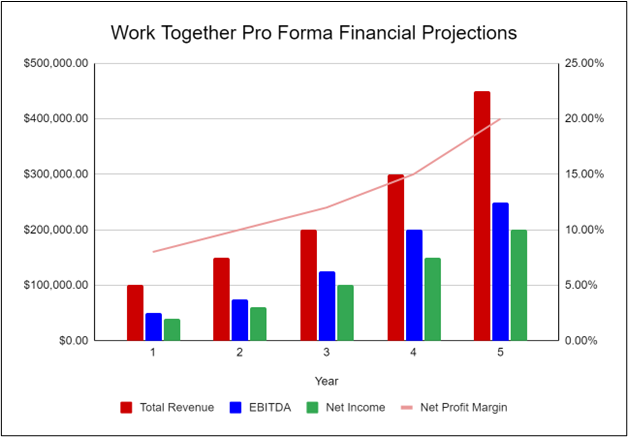
Company Overview
Who is work together.
Work Together is led and founded by Dustin James. Dustin has been a commercial broker for ten years, and has seen an increasing demand in flexible coworking spaces. Since this is an increasing need in a world that is offering more remote and flexible working options, Dustin has decided to specialize in leasing coworking spaces to meet the working needs of the professionals and entrepreneurs of the Las Vegas area.
Work Together History
Dustin incorporated Work Together as an S-Corporation on May 1st, 2023. The company is currently being run out of Dustin’s home office but will move to a commercial location once the lease has been finalized. Dustin has also identified several office locations to lease and turn into coworking spaces.
Since incorporation, Work Together has achieved the following milestones:
- Found a location for the main office and signed a letter of intent to lease it.
- Developed the company’s branding image, social media, and website.
- Began recruiting key staff.
Work Together Services
Industry analysis.
The evolution of the coworking space concept has grown exponentially over the past ten years. According to Mordor Intelligence, over the next five years, the coworking space industry will grow at a CAGR of 11%. Several factors will contribute to this growth, as industry reports suggest:
- Higher costs associated with land acquisition and building
- Higher costs for individual office build-outs
- Higher costs for building materials overall
- Increased demand for “team or group community spaces”
- Increased purpose in resource “sustainability”
- Increased goal to minimize expenditures across the board
At the same time, as noted by Work Together, the coworking space will need to innovate more spatial designs and layouts for teams or groups that require collaboration. The team or group concept is now dominating the business world and it is anticipated that it will continue to do so for many years to come.
Customer Analysis
Demographic profile of target market.
The clients of Work Together are typically business owners, investors, business executives, and realtors seeking flexible work spaces in the Las Vegas area. Some clients will just need space for themselves, while others will need space for a small team of up to 15 people. Work Together will offer a variety of office space options to satisfy this diverse demographic.
The demographics of Las Vegas, Nevada are as follows:
Customer Segmentation
Work Together will primarily target the following customer profiles:
- Entrepreneurs
- Remote workers
- Small teams and companies
Competitive Analysis
Direct and indirect competitors.
Work Together will face competition from other companies with similar business profiles. A description of each competitor company is below.
King & Hartfield Group
King & Hartfield is a commercial broker that designs coworking spaces for small and large organizations. These rentals are on an annual basis, and they rarely allow for monthly or temporary leases. Since many professionals and teams need accommodations that are more flexible than this, we expect many local professionals to seek out our more flexible lease options.
Clarkson Coworking Connections
Clarkson provides temporary coworking offices for professionals who only need to rent offices for a few days or weeks at a time. They are specifically designed for entrepreneurs, artists, and others who only need a private space for temporary projects. Since Clarkson Coworking Connections does not offer more permanent services, many professionals and teams will seek out our offices for monthly or annual rentals.
Moss & Associates
This company has been in existence for five years and has created a short list of successful coworking space build outs. The company does not design or build out space for more than six people, working from the platform that too many people in community spaces are not beneficial to their clients. Given this limit, Work Together is positioned to succeed in the larger projects and teams that need coworking accommodations.
Competitive Advantage
Work Together offers several advantages over its competition. Those advantages are:
Marketing Plan
Brand & value proposition.
Work Together will offer the unique value proposition to its clientele:
- Quiet and clean office spaces
- Affordable daily and monthly rates
- Client-focused services, where the company’s interests are aligned with the customer
- Service built on long-term relationships and personal attention
Promotions Strategy
The promotions strategy for Work Together are as follows:
Social Media
Dustin James will create the company’s social media accounts and invest in ads on all social media platforms. The company will use targeted marketing to appeal to our target demographics.
Work Together will develop a professional website that showcases pictures of the office spaces we provide. It will also invest in SEO so that the company’s website will appear at the top of search engine results.
Billboard Advertising
We will drive attention toward Work Together by leasing a billboard alongside major highways. Advertising on heavily traveled commute routes is an opportunity to alert large numbers of individuals who are in need of flexible working options.
Publications
The company will also invest in advertising in selected local and national publications such as professional magazines, newspapers, and other publications to build brand awareness and draw in new customers.
Work Together will charge moderate rates for its coworking spaces so clients feel they are getting a great value when renting out our offices.
Operations Plan
The following will be the operations plan for Work Together. Operation Functions:
- Dustin James will be the President of Work Together. He will oversee the general operations of the organization, rent out offices to clients, and hire and train all staff. Over the next several months, Dustin will focus on hiring the following staff:
- A full time Administrative Assistant who will manage the company website and listings and assist clients with their questions and concerns.
- A Director of Marketing who will run and manage all marketing and advertising efforts.
- Janitorial staff to ensure that the offices are in clean and perfect condition every day.
Milestones:
Work Together aims to achieve the following goals in the next six months.
- 6/1/202X – Finalize lease agreement
- 7/1/202X – Design and Build Out Underway
- 8/1/202X – Design and Build Out Completed
- 9/1/202X – Hire and Train Staff
- 10/1/202X – Grand Opening
- 11/1/202X – Reach Break-Even
Financial Plan
Key revenue & costs.
The key revenues for Work Together will come from charging clients for the offices they rent from us.
The major cost drivers include labor expenses, cleaning expenses, rent, utilities, supplies, and marketing expenses.
Funding Requirements and Use of Funds
Key assumptions.
The following table outlines the key assumptions required in order to achieve the revenue and cost numbers in the financials and pay off the business loan.
- Number of clients per month:
- Year 5: 100
- Annual lease: $150,000
Financial Projections
Income statement, balance sheet, cash flow statement, coworking space business plan faqs, what is a coworking space business plan.
A coworking space business plan is a plan to start and/or grow your coworking space business. Among other things, it outlines your business concept, identifies your target customers, presents your marketing plan and details your financial projections.
You can easily complete your Coworking Space business plan using our Coworking Space Business Plan Template here .
What are the Main Types of Coworking Space Businesses?
There are a number of different kinds of coworking space businesses , some examples include: Industry specialized coworking space, Business incubator, Private coworking space, and Open coworking space.
How Do You Get Funding for Your Coworking Space Business Plan?
Coworking Space businesses are often funded through small business loans. Personal savings, credit card financing and angel investors are also popular forms of funding.
What are the Steps To Start a Coworking Space Business?
Starting a coworking space business can be an exciting endeavor. Having a clear roadmap of the steps to start a business will help you stay focused on your goals and get started faster.
1. Develop A Coworking Space Business Plan - The first step in starting a business is to create a detailed coworking space business plan that outlines all aspects of the venture. This should include potential market size and target customers, the services or products you will offer, pricing strategies and a detailed financial forecast.
2. Choose Your Legal Structure - It's important to select an appropriate legal entity for your coworking space business. This could be a limited liability company (LLC), corporation, partnership, or sole proprietorship. Each type has its own benefits and drawbacks so it’s important to do research and choose wisely so that your coworking space business is in compliance with local laws.
3. Register Your Coworking Space Business - Once you have chosen a legal structure, the next step is to register your coworking space business with the government or state where you’re operating from. This includes obtaining licenses and permits as required by federal, state, and local laws.
4. Identify Financing Options - It’s likely that you’ll need some capital to start your coworking space business, so take some time to identify what financing options are available such as bank loans, investor funding, grants, or crowdfunding platforms.
5. Choose a Location - Whether you plan on operating out of a physical location or not, you should always have an idea of where you’ll be based should it become necessary in the future as well as what kind of space would be suitable for your operations.
6. Hire Employees - There are several ways to find qualified employees including job boards like LinkedIn or Indeed as well as hiring agencies if needed – depending on what type of employees you need it might also be more effective to reach out directly through networking events.
7. Acquire Necessary Coworking Space Equipment & Supplies - In order to start your coworking space business, you'll need to purchase all of the necessary equipment and supplies to run a successful operation.
8. Market & Promote Your Business - Once you have all the necessary pieces in place, it’s time to start promoting and marketing your coworking space business. This includes creating a website, utilizing social media platforms like Facebook or Twitter, and having an effective Search Engine Optimization (SEO) strategy. You should also consider traditional marketing techniques such as radio or print advertising.
Coworking Business Plan + 6 months strategy launching [PDF Download]
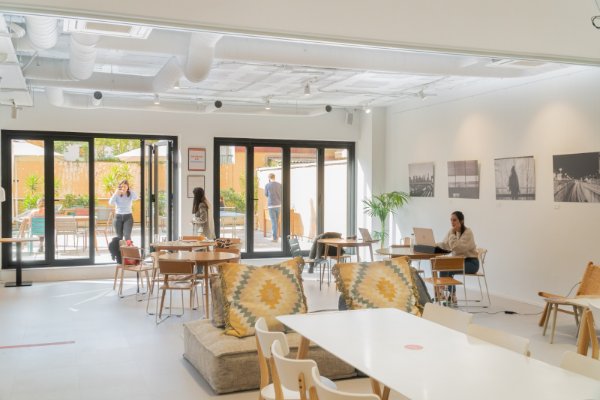
Business Plan for Your Coworking Space
Developing a business plan for a coworking centre can be a long and complex process, especially if you are inexperienced. However, you are an operator going for your second space. In that case, a business plan will help you improve your strategy and better define the actions to carry it out because it is a living document that needs to be updated every year as the business grows .
Whether you are opening your first or second coworking space, before investing in the project , you should first conduct a feasibility study to determine the project’s profitability and confirm that there is a business opportunity.
Once you have validated the project’s feasibility, the next step is to draw up your business plan. The feasibility study and the business plan are closely linked; the first one assures you that there is a business and sets the economic objectives , while the second one proposes the strategy and the actions to be implemented to achieve the goals.
At HWL, we have completed nearly 50 coworking projects worldwide and have the experience in Coworking Development , knowledge and resources to help you create your business plan. In this article, we explain how we can help you to make this process less complicated.
Why do you need a business plan for a coworking space?
Making a coworking business plan is essential because:
- It defines the strategy of your company and the actions to be implemented.
- It plans the growth of your business.
- It projects the financial profitability of the business over the years.
- It reduces risks.
- It improves your operations.
- In addition, it can help you obtain financing.
What are the components of a coworking business plan?
Divide the business plan into three blocks:
1. Business model validation.
2. Business development.
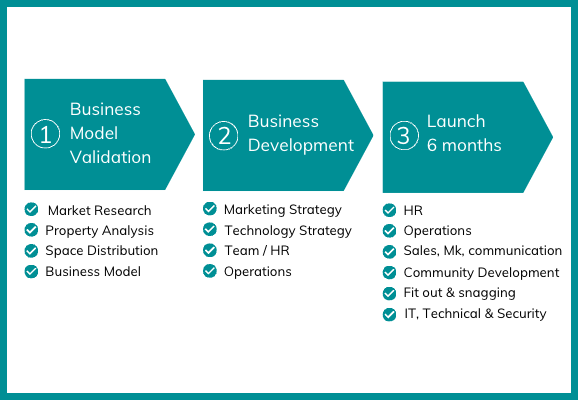

1. Business model validation
You elaborate on the feasibility study . This section is critical because it will help you decide whether your coworking project will work.
Executive summary
It describes the company and provides critical conclusions once you finish the business plan. It includes:
- Overview of the company.
- Description of the partners, management team and key collaborators.
- Value proposition.
- Space allocation summary.
- Financial study summary.
Market research
A market study helps you to detect if there is a business opportunity for your coworking, who your demand is , what they need and how you can standby from your competition . It includes:
- Local environment analysis: Explore the location and detect surrounding services (bars, restaurants, gyms), nearby competitors, corporations, universities, coworking spaces, technology hubs, business centres, etcetera.
- Benchmarking of local and inspirational competitors: Compare data such as services offered, prices, size of space or number of workstations, common areas, value proposition and audience.
- Demand and needs exploration: Segment the audience and design your Buyer Persona (user type, generation, pains and needs, interests, habits, purchasing power).
- Value proposition: Identify the objectives and needs of your potential users and link them to the value proposition.
Property analysis
Hire an engineer to confirm the property is valid, comply with the coworking activity regulations , and obtain all the necessary permits.
Space distribution
- Space allocation programme: Define your space’s different uses and needs according to your demand. With the architectural programme, you obtain the productive units to generate income in your financial plan.
- Preliminary architectural study: Preliminary design of the space distribution following the space allocation programme’s indications. An architect must dump the information from the programme into AutoCAD to validate the productive units obtained.
Business model
10-year economic and financial study under three different occupancy scenarios will project monthly revenues, operating expenses and cash flow. It also will include the Capex and critical financial profitability metrics for the space as a service business model. As a result, you will get a perfect financial picture of the business and set the financial targets to be achieved.
2. Business development
You create the strategy of your coworking business and plan all the actions to be carried out to achieve the objectives established in the financial study.
Marketing strategy
This serves to attract , engage and retain potential members of your coworking space. It includes:
- Products and services: Describe all plans, memberships, included services and additional services.
- Promotions and pricing: Document the prices you will offer and compare them with your competitors. Also include plan opening promotions, contract promotions, etc.
- Key alliances: Proposal of potential partners (associations, universities, influencers, perks).
- Sales channels: Identification of the different brokers and specific sales channels for coworking.
- Communication plan: Define the channels through which you will communicate (social networks, website, posters, events, etc).
- Community development plan: Stages and actions for the development of the community (creation, development and retention) including a programme of activities for each stage.
- User experience: Design and describe the coworker journey in all its stages, from lead generation, conversion, on-boarding, and retention to exit.
- Lead Generation Strategy (Facebook and Google ads).
- Media plan.
- Blog and SEO strategy.
- Newsletter strategy.
Technology strategy
Proposal of technological solutions for intelligent space and business management :
- Management software.
- Software integrations: electronic access, printing, platform, community, internet, etc.
- Business production tools: project manager, CRM, cloud workspace, etc.
- Description of the management team, their roles, responsibilities, tasks, remuneration and schedules for each position.
- Training plan for the team.
Operations manual
Describe how you are going to achieve the related objectives. It includes all the daily processes and tasks to be carried out by each department:
- Space or facility Manual.
- Team manual or employee handbook.
- Sales Manual (including the Coworking Agreement).
- Venue hire/ external events manual.
- Communication manual.
- Community manual (including the House Rules).
3. Strategy & timeline for the launch of your coworking business
Prepare to go to market three months before the opening and three months after .
We share with you a co-created launch strategy made by 20 coworking operators from different countries as a result of a workshop facilitated by Claire Carpenter from The Melting Pot and Vanessa Sans from HWL. You can download the launch plan with the leading strategies and action plans for setting up a coworking centre during the three months before and after its opening date.
As you can see, developing a business plan for your coworking is a worthwhile endeavour. Follow the structure we have proposed. You will become an expert capable of generating a marketing strategy, making an operational plan, and starting up and growing a thriving coworking centre. If you need help in the process, contact us .
If you enjoyed this article, you would like How to open a coworking space .
Featured picture courtesy of Aticco coworking .
HAPPY WORKING LAB We work from Factory 103 to the World C/Mallorca, 103 08029 – Barcelona
Tel. & Whatsapp +34 626555468 [email protected]
- Clients and Projects
- Work with Us
- Privacy and Cookies Policy
Happy Working Lab, S.L © All rights reserved | Design & Webmaster Omylab
Privacy Overview
Training and mentoring program for coworking operators.
Do you manage a coworking space? Yes No
What module are you interested in?
Entire course Introduction to CO Models Community Dynamization Sales Strategies, the Service and Pricing Model Business Model Coworking Customer Journey Lead Generation Lead Nurturing Social Media Management Legal coworking Tools for operations optimization

Discover All Features
Discover our complete solution

Room Scheduling
Smart booking for connected offices

Desk Booking
Seamless desk booking for hybrid work

Visitor Management
Secure visitor experience

Billing and Payment
Automated invoicing & payment

Customer Lifecycle Management
360° control on accounts and contracts

Room & Desk Booking
Seamless cross-platform booking flows

Community Experience
Exceptional member experience
Visitor and check-in management
Hybrid Offices
A seamless hybrid work software for modern offices
Coworking Spaces
A powerful all-in-one flex & coworking space software
How we help businesses thrive

Adopt hybrid work in your office
Implement the perfect hybrid work experience

Implement hot desking and desk hoteling
Allow your teams to pick where they do their best work

Improve your workspaces utilization
Understand how your offices are used and act on it

Host visitors seamlessly and securely
Make a great first impression without compromising on security

Build efficient coworking operations
Streamline your multi-location operations to grow faster

Client Stories

Platform Security

Blog and resources

Guide to operate hybrid offices

Course to grow coworking spaces
- Get a demo – It’s free

How to Create a Business Plan for Your Coworking Space
In this article you will find:
This article is part of the school of coworking course through Archie. Make sure to check out the other articles to learn more about how to start a coworking space business.
1. What is a Business Plan?
Chances are, you have probably heard of a business plan before but in case you’re unfamiliar with what a business plan is, it is a written document that helps a business define who they are and how it will be profitable.
This management tool is widely recognized as one of the first and most crucial steps in starting a business, especially when seeking investors and financing for your project.
These documents can quickly become quite hefty due to the sheer amount of information included in them. For the same reason, it can also be rather difficult and even confusing to draft up one of your own from scratch.
This article will review and explain the key points to include in your coworking space business plan as well as provide templates to help you get started.
Key Components of the Coworking Business Model
- Membership Tiers : Most coworking spaces offer different membership levels, such as hot desks (shared spaces), dedicated desks, and private offices. Pricing varies based on the amenities and exclusivity of these options.
- Event Space Rentals : Many coworking spaces have conference rooms and event spaces that can be rented out for workshops, meetings, or events.
Ancillary Services : Additional revenue streams might include printing services, mail handling, storage solutions, and even in-house cafes or snack bars
2. Why do you need a Business Plan?
Whether you are planning on sharing your business plan with potential investors or if you are writing it for internal purposes, this document is one of the foundational tools for kickstarting your business idea.
Above all, you can expect to be asked to hand in your business plan anytime you are looking to raise funds for your project. If you don’t have one, raising capital will be nearly impossible as your investors won’t be able to assess the viability of your project and are unlikely to invest in a business without a promise of return on investment.
A well-written business plan will help you clearly identify your strategy, potential roadblocks and required resources to name a few. Remember that each segment of your coworking space business plan is interdependent on the next and will serve as building blocks for one another.
3. What Goes in a Business Plan?
While there is no official set structure or length for business plans, there are some elements that should always be included. Your plan should provide as much detailed information about your business but you should be careful to keep it concise to avoid confusing or even boring your reader. Your business plan should demonstrate your expertise and dedication to the project.
Below is an example of a coworking space business plan table of contents:
Business Plan Table of Contents (Sample)
- Executive Summary
- Company Description
- Market Analysis Team and Management
- Products and Services
- Marketing Strategy
- Operations Strategy
- Financial Plan
It is important to take note that the information below serves as a guideline for your coworking space business plan and that there is no set length for any given section. Your business plan should reflect your company’s uniqueness and lucrative potential.
4. Your Coworking Space Business Model
The following section of the article will review each point found in the sample table of contents above in detail so let’s jump right into it!
4.1 Executive Summary
This is a high-level overview of your plan. The purpose of including this summary at the beginning of your business plan is to highlight the keys points found in it for your potential investors. This summary should be persuading the reviewers to continue reading further.
This summary will be the first section of your business plan and shouldn’t go much longer than one page. Additionally, it should be the last section you write since you won’t know what the key points to summarize are before you have written the bulk of your business plan.
Your executive summary should include:
- Company overview . What is the company’s mission, goals and vision?
- The team . Who is involved in the project, and what are their roles?
- Product and services . What is the company selling and who are you selling to?
- Marketing strategy . A brief overview of your strategy for reaching your target audience.
- Financial plan . What is the revenue or revenue projection, how much are investing or looking to fund?
4.2 Company Description
This next section of your coworking business plan is the basis for your entire project. Your company description should clearly inform the reviewers of who you are and what you plan to do.
This portion of your business plan should provide clear, persuasive answers on what sets you apart from the competition. Identify the uniqueness of your product and services; is your business model solving issues in its industry? What are the strengths of your business? What advantages does it hold?
The goal of this portion is to convince your potential investors that your business model is a good investment and should include the following points:
- Business structure : this refers to the type of legal entity your coworking space will fall under. There are different types of structures such as sole proprietorship or partnership, each with their respective benefits. It is extremely important that you are careful with your choice since different structures are subject to different laws on personal liability, taxation, funding, etc.
- Your industry : you will need to identify which industry your business will be a part of. For example, your coworking business is an industry of its own but if you were drafting up a business plan for a new women’s boutique then the industry would be retail. Mission statement: is a concise explanation of the reason your company exists. In other words, in a sentence, you should be able to provide the “why” behind what your company does.
WeWork’s Mission Statement : “Empowering tomorrow’s world at work.”
- Vision : here you should paint a picture of the impact your company is foreseen to have on the world once it is fully realized. Ultimately, your vision should clarify what your company will bring to the industry.
WeWork’s Vision : “WeWork was founded in 2010 with the vision to create environments where people and companies come together and do their best work…”
- Goals : naturally, you also want to provide an overview of what you hope to achieve. You will want to include both short-term and long-term goals. Your short-term goals should be realizable within a year’s time and your long-term goals projections should be attainable within 1 to 5 years.
4.3 Market Analysis
Your business plan will require market research and analysis as well as a competitive analysis.
The goal of this section is to provide an overview of your industry and target market and define your potential market.
You will want to collect relevant data on your industry trends and trajectory and your target audience. Your analysis should also reveal your market size and total addressable market .
You will need to establish a perimeter for your market and research the competition within this perimeter. For example, you could set a 10 miles radius from your location as your perimeter and conduct your market and competitor analysis within this radius.
A good analysis should provide answers to questions such as:
- How will your company impact those habits?
- Why is the selected target market the right choice?
- How is your company helping them meet their needs?
- What are the projected future changes in your market?
- How will you meet the projected changes?
For the competitive analysis portion, you will want to look at what competitors are doing and why it is working or not. Consider how your competition is approaching the market and identify their strengths and weaknesses to help you visualize how you can do it better. After conducting a competitive analysis, your company’s unique offering should be well-defined.
Below are some examples of criteria for a coworking space competitor analysis:
- Design of their space
- Services offered
- Price point
During this time, you will likely want to perform a S.W.O.T. analysis to help you clearly identify the strengths, weaknesses, opportunities, and threats of your company.
That being said, while a S.W.O.T. analysis is an excellent exercise to conduct you should avoid including it “as is” in your business plan. Instead, try to summarize the main findings of your analysis and incorporate them in your market analysis section.
4.4 Team and Management
This part of your coworking space business plan should include details on who is running the company.
With an organizational chart, present the internal structure of your company with the respective roles and responsibilities clearly listed.
This section should effectively communicate how each key management role is contributing to your company’s success.
You will also have to reiterate the legal structure of your company which you established with your business structure. Is your company a C or an S corporation? Is it a form of a limited partnership, or are you a sole proprietor or limited liability company (LLC)?
4.5 Product and Services
This section is meant to provide a clear outline of the key details of your product or service offerings. You will want to describe each selling point, whether it is a specific product or a general service provided at your company and demonstrate how it benefits the consumer.
Consider the life cycle of your product or services and future product and services your company will offer and describe how you plan on implementing them.
4.6 Marketing Plan
The overarching goal of your marketing plan is to detail your strategy for attracting and retaining customers. A marketing strategy is ever-evolving and unique to each business. This section of your business plan should reflect this and should include both your current and future approach for marketing your company.
Things to consider for this section:
- How is your strategy fitting for the needs of your target market?
- Will you be using a particular channel more than another to promote your business and why?
- How much does your product or services cost?
- What is the reasoning behind the price?
- How will you put your offerings in front of the desired audience?
- Where will you be selling your product or services?
- What is the cost of acquisition and lifetime value of a client?
Your value proposition is another key element of this section. This summarized statement of why the consumer should buy your product or services refers to the promised value a company vouches to deliver if a consumer chooses to buy what they are selling.
This statement should provide some insights on the company’s intent, what it stands for, how it operates and why it deserves the consumer’s business.
Another goal here is to put down on paper how sales will take place in practice. You will use what you’ve learned about marketing and sales again in later sections so it’s important that you thoroughly describe your strategies and include as many tactical details as possible without overcrowding the overall marketing plan.
4.7 Operations Strategy
Operations and logistics refer to the workflow strategies you plan on implementing at your company in order to make your business come to life. This section should assess your company’s needs in regards to the premises and capital goods in order to provide an in-detail plan of your operations including structures related to suppliers and production, the facilities and required equipment, etc.
4.8 Financial Plan
The financial health of your company should be your top priority. Naturally, without financial health, your business will not succeed. Your financial plan should present how you expect your business to thrive financially.
This section should include financial projections for the upcoming years presented in the form of a financial model.
5. Coworking Space Business Plan Templates
If you’re looking to dive into the specifics, there are several resources that can help:
- Coworking Space Business Model Canvas : A visual tool that provides an overview of your business strategy, value proposition, and customer segments.
- Coworking Space Business Model PDF : A complete guide into the intricacies of running a coworking space.
Excel Templates : F or those who prefer a hands-on approach, “coworking space business model template excel” resources can help you map out your financial projections and business strategy.
It is also a good idea to use a business model canvas to map out all of your ideas before you start. This will give you an overview of everything you need to include in your business plan.
6. Conclusion
Your coworking space business plan should remain clear and succinct. Keep in mind your audience when writing out your plan.
If you are looking for funding, you will want to pay extra attention to the financial and marketing aspects of your business plan and include a clear exit strategy with maximum profits for your potential investors. If you are writing a business plan for internal purposes you may want to add a more in-depth description of the marketing strategy and operations.
You’re now readily equipped to draft a comprehensive and effective business plan for your coworking space

7 Ways to Maintain Cleanliness and Sanitation In Your Coworking Space

How to Choose a Good Location for your Coworking Space

How To Design Your Coworking Space Layout

How to Build A Community In A Coworking Space
Just Business Plan

Co-Working Space Business Plan Template + Pdf
Table of Contents

Executive Summary
Business Name: Creative Hub Co-Working Space Location: Austin, Texas Website: www.creativehub.com Contact Information: [email protected] | (512) 555-0199
Business Overview: Creative Hub Co-Working Space is a dynamic coworking facility situated in the heart of Austin, Texas. Our mission is to create an innovative, productive, and collaborative environment for freelancers, startups, small businesses, and remote workers. We offer flexible membership plans tailored to the diverse needs of Austin’s entrepreneurial community, providing both affordability and convenience.
Our space is designed to inspire creativity and enhance productivity, with modern amenities such as high-speed internet, private offices, hot desks, and meeting rooms. We also foster a strong sense of community by hosting regular networking events, workshops, and social gatherings, enabling members to connect, collaborate, and grow their businesses.
The central downtown location makes us easily accessible and puts our members in close proximity to key business hubs, restaurants, and public transportation. At Creative Hub, we understand the importance of a supportive work environment and aim to offer more than just a workspace — we provide a thriving community where ideas flourish, partnerships form, and success is nurtured.
Whether you’re an independent professional seeking a flexible workspace or a growing startup in need of office space, Creative Hub Co-Working Space has the perfect solution to fit your business needs. We are committed to being a key player in Austin’s vibrant business ecosystem and a catalyst for innovation and growth.
Objectives:
- Achieve 80% occupancy within the first 12 months of operation.
- Generate revenue of $136,000 in the first year.
- Expand to two additional locations within five years.
- Establish a strong brand identity through a dedicated marketing strategy.
Keys to Success:
- Prime Location: Positioned in downtown Austin, near public transit and a thriving business district.
- Diverse Membership Options: Tailored plans for individuals, startups, and larger remote teams.
- Community Focus: Hosting regular networking events, seminars, and workshops to foster interaction among members.
- Outstanding Amenities: High-speed internet, modern meeting rooms, private office spaces, and complimentary coffee.
Business Description
Business Structure:
Creative Hub Co-Working Space will be established as a Limited Liability Company (LLC), a business structure chosen to offer several key advantages, particularly in terms of liability protection, management flexibility, and tax benefits. The primary reason for forming an LLC is to safeguard the personal assets of the owners. In the event of any legal or financial challenges, the LLC structure ensures that the owners’ personal assets, such as their homes or personal savings, are not at risk. This limited liability is crucial for mitigating risks associated with operating a business in a competitive market like coworking.
The LLC structure also provides flexibility in management. Unlike corporations, which require a board of directors and follow strict governance procedures, an LLC allows for a simpler management framework. Creative Hub Co-Working Space will have the freedom to determine its own management structure, whether it’s managed by the owners or an appointed management team. This flexibility ensures that the business can adapt as it grows and evolves, without being restricted by rigid corporate formalities.
From a tax perspective, the LLC offers significant advantages as well. It provides the option for pass-through taxation, meaning the company’s profits or losses are reported on the owners’ personal tax returns, avoiding the double taxation often associated with corporations. This allows for more efficient tax management and potentially lower overall tax burdens.
Moreover, the LLC structure is well-suited for growth, as it allows for multiple owners, known as members. As Creative Hub expands, it will be easier to bring in additional investors or partners. The ability to add new members without restructuring the business will facilitate long-term growth and expansion, making the LLC an ideal choice for the company’s future.
Services Offered:
Creative Hub will offer a variety of workspace solutions to accommodate the diverse needs of our target market:
- Hot Desks: Unreserved desks for daily or hourly use.
- Dedicated Desks: Reserved desks for individuals seeking a stable, personalized workspace.
- Private Offices: Secure, enclosed offices for small teams or businesses.
- Meeting Rooms: Fully equipped meeting spaces available for rent by the hour.
- Event Spaces: Multi-purpose areas for networking events, workshops, and social gatherings.
- Amenities: High-speed internet, kitchen area with snacks and coffee, printing services, lockers, and 24/7 access for premium members.
Location and Facilities:
The space will span approximately 5,000 square feet in downtown Austin, an area known for its dynamic business scene and proximity to key resources. The open-plan layout will include collaborative workspaces, quiet zones for focused work, and breakout areas for informal meetings. Additionally, the design will incorporate sustainable materials and local art, creating a welcoming, creative atmosphere.
Market Analysis
Industry Overview:
The coworking industry has experienced tremendous growth over the past decade, driven by the increasing demand for flexible work arrangements. As more professionals, especially freelancers, entrepreneurs, and remote workers, move away from traditional office setups, shared workspaces have surged in popularity. By 2025, the global coworking market is projected to reach $13 billion, with growth fueled by the gig economy, a rise in startups, and the shift toward remote work by larger corporations.
This trend reflects a broader transformation in the way people work, as flexibility and adaptability become crucial for businesses and individuals alike. Coworking spaces provide a cost-effective, community-focused alternative to traditional office leases, offering members modern facilities, collaborative environments, and networking opportunities. These spaces foster innovation, creativity, and productivity by bringing together professionals from diverse industries in shared environments designed to promote collaboration.
In the U.S., cities like Austin, known for their vibrant entrepreneurial ecosystems, are particularly well-suited for coworking spaces. Austin’s thriving tech sector, creative industries, and influx of startups make it an ideal market for flexible workspaces. The city’s strong sense of community, coupled with its reputation as a hub for innovation, has made coworking an essential part of its business landscape.
As more businesses adopt hybrid or fully remote work models, coworking spaces are expected to continue their rapid expansion, playing a vital role in supporting the changing needs of professionals. By offering flexible terms, shared resources, and a sense of community, coworking spaces are positioned to thrive in the evolving work environment, catering to both individual freelancers and growing teams.
Target Market:
Creative Hub will focus on four primary customer segments:
- Freelancers: Independent professionals, including writers, designers, and developers, who require a flexible and cost-effective workspace.
- Startups: Early-stage businesses looking for affordable office space and networking opportunities.
- Small Businesses: Small teams that need private offices or dedicated desks without the overhead costs of traditional office leasing.
- Remote Workers: Employees of larger corporations who prefer working outside their home or company headquarters for increased productivity.
Market Trends:
Key trends shaping the coworking industry include:
- Rise in Remote Work: With more companies offering remote options, professionals seek coworking spaces for collaboration, socialization, and productivity.
- Community Focus: Coworking spaces are increasingly positioning themselves as hubs for networking and community engagement.
- Technological Integration: The use of apps for space booking, member communication, and workspace management is becoming standard.
- Sustainability: A growing number of spaces emphasize eco-friendly practices, which appeals to environmentally conscious users.
Market Size & Growth Potential:
Austin’s coworking market is currently valued at $200 million and is projected to grow at an impressive rate of 15% annually. This growth is fueled by the city’s thriving tech sector, robust startup culture, and increasing demand for flexible workspaces. As remote work and entrepreneurship continue to rise, Austin is emerging as a key hub for coworking spaces, making it an ideal city for the expansion of this industry.
The city’s entrepreneurial ecosystem is supported by its reputation as a center for innovation, with a steady influx of tech professionals, freelancers, and small businesses seeking collaborative environments. With coworking spaces offering flexible office solutions and opportunities for networking, they have become vital to Austin’s dynamic business community. The ability to work alongside like-minded individuals in a creative, well-designed space is increasingly appealing to Austin’s professionals.
Creative Hub Co-Working Space is uniquely positioned to capitalize on this growing market. Its central location in downtown Austin ensures accessibility for professionals and businesses, making it a convenient option for those seeking a productive workspace in the city. Moreover, Creative Hub’s value proposition of offering flexible membership plans, state-of-the-art amenities, and a strong sense of community sets it apart from competitors.
By focusing on creating a collaborative and innovative environment, Creative Hub aims to attract a wide range of clients, including freelancers, startups, and remote workers from larger corporations. With the coworking industry in Austin on the rise, Creative Hub’s strategic approach and prime location position it to capture a significant share of this expanding market, ensuring sustainable growth in the years to come.
Competitive Analysis
Competitor Overview:
The Austin coworking space market is competitive, with major players including WeWork, Spaces, and Industrious. Each of these companies offers varying levels of service and pricing, attracting different segments of the market.
Competitive Advantage:
Creative Hub will differentiate itself through:
- Ambiance and Design: Incorporating local Austin art and eco-friendly materials will create a unique, inspiring atmosphere.
- Flexibility: Offering diverse pricing options and membership plans that cater to freelancers, startups, and remote workers.
- Community Building: Hosting regular networking events, workshops, and skill-sharing sessions will foster a sense of community among members.

Customer Analysis
Customer Segmentation:
- Freelancers: Individuals looking for flexible, pay-as-you-go workspaces.
- Startups: Small businesses that need access to affordable office spaces and meeting rooms without long-term leases.
- Remote Workers: Employees of corporations who are allowed to work remotely but require a structured work environment.
- Small Teams: Small business teams requiring private office space, flexible enough to accommodate business growth.
Customer Needs:
- Flexibility: Whether it’s day passes or monthly subscriptions, members value options that fit their fluctuating schedules.
- Networking Opportunities: Many professionals join coworking spaces to collaborate and network.
- Amenities: Reliable internet, comfortable seating, meeting rooms, and refreshments are essential features members expect.
Marketing Plan
Marketing Objectives:
- Build brand recognition within Austin’s entrepreneurial community.
- Attain 100 paying members within the first 12 months.
- Maintain an online presence that generates traffic and inquiries.
Marketing Strategies:
- SEO: Optimizing the Creative Hub website for relevant keywords such as “coworking space Austin,” and maintaining a blog about remote work and entrepreneurship.
- Social Media: Engaging users through Instagram and LinkedIn to showcase events, member stories, and behind-the-scenes operations.
- Email Campaigns: Regular newsletters to subscribers, highlighting new amenities, events, and member testimonials.
- Local Events: Partnering with Austin’s business community to host events, networking mixers, and collaborative workshops.
- Sponsorships: Sponsoring local entrepreneurial events and hackathons to gain visibility.
- Incentivizing current members with discounts or free services when they refer new clients.
Operations Plan
Facility Requirements:
The coworking space will be 5,000 square feet, incorporating open-plan desks, private offices, meeting rooms, and breakout areas. Key areas include:
- Reception Area: Welcoming space for member check-ins and guest services.
- Hot Desk Area: A large, open area with flexible seating arrangements.
- Private Offices: Enclosed spaces for teams and individuals who need more privacy.
- Meeting Rooms: Equipped with AV technology, available for bookings.
- Kitchenette: A small kitchen area offering snacks, coffee, and tea.
Staffing Requirements:
- Community Manager (1): Responsible for overseeing daily operations, managing memberships, and organizing events.
- Administrative Staff (2): Handling front desk operations, member inquiries, and office supplies.
- Cleaning Staff (2 part-time): Ensuring the workspace remains clean and welcoming.
Financial Plan
Startup Costs:
Revenue Projections:
By the end of the first year, Creative Hub aims to have 110 paying members, generating a monthly revenue of $22,000, with an annual total of $136,000.
Risk Analysis
Potential risks are an inherent part of any business, and Creative Hub Co-Working Space has identified several key risks along with mitigation strategies to ensure long-term success.
Market Risk: A potential decline in demand for coworking spaces due to an economic downturn poses a significant risk. In challenging economic times, businesses and freelancers may reduce their spending, potentially affecting membership rates. To mitigate this, Creative Hub will introduce more flexible pricing options, such as short-term memberships or discounts, making it easier for clients to maintain their workspace even during financial uncertainty. Additionally, Creative Hub will broaden its target market by offering specific services for new customer segments, including corporate remote workers, hybrid teams, or nonprofits, thereby expanding revenue sources.
Operational Risk: Operational risks, such as inefficiencies in day-to-day management, can affect customer satisfaction and profitability. To address this, Creative Hub will hire experienced staff who are well-versed in managing coworking spaces. By bringing in skilled community managers and operations personnel, Creative Hub can ensure smooth and effective operations. Furthermore, the implementation of coworking management software will streamline processes such as booking systems, invoicing, and member communications, reducing the likelihood of operational errors and improving the overall member experience.
Competitive Risk: With Austin’s coworking market growing rapidly, increased competition is a potential threat. New entrants may attempt to capture market share by offering similar services. To differentiate itself, Creative Hub will focus on creating a unique value proposition centered on community engagement. This includes hosting regular events, workshops, and networking opportunities that foster collaboration among members. Additionally, by maintaining competitive pricing models and offering flexible membership plans, Creative Hub will attract and retain a loyal customer base despite increasing competition.
By proactively addressing these risks, Creative Hub will be well-prepared to navigate the challenges ahead and ensure long-term success.
Creative Hub Co-Working Space is strategically positioned to become one of the leading coworking destinations in Austin, a city known for its thriving entrepreneurial culture and dynamic business landscape. With a carefully crafted business model that prioritizes flexibility, innovation, and customer-centric services, Creative Hub aims to cater to the evolving needs of freelancers, startups, small businesses, and remote workers from larger corporations.
Our comprehensive marketing strategies focus on building brand recognition and fostering long-term relationships with our members. Through targeted digital marketing, SEO optimization, and active engagement on social media platforms like LinkedIn and Instagram, we will consistently reach potential customers and reinforce our presence in the local market. By hosting community events and partnering with local businesses, we will build a strong network of professionals who view Creative Hub not only as a workspace but as a thriving community of innovators.

Additionally, Creative Hub’s dedicated and experienced management team is a critical driver of our anticipated success. Our leadership brings years of expertise in project management, operations, and digital marketing, ensuring smooth day-to-day operations and effective long-term planning. The team’s focus on customer satisfaction will be paramount, with efforts aimed at continuously improving the member experience and adapting to changing market conditions.
As the coworking industry continues to evolve, so will Creative Hub. We are committed to offering flexible membership plans that can adjust to the needs of our clients, whether they are independent professionals seeking short-term desks or growing startups in need of private offices. By emphasizing a sense of community, fostering collaboration, and delivering exceptional services, we are confident that Creative Hub will not only achieve profitability but also expand its presence across Austin and beyond, becoming a staple in the city’s business ecosystem.
Download Free Co-Working Space Business Plan Template + Pdf
Leave a Comment Cancel Reply
Your email address will not be published. Required fields are marked *
Save my name, email, and website in this browser for the next time I comment.

Coworking Space Business Plan [Sample Template]
By: Author Tony Martins Ajaero
Home » Business ideas » B2B Industry » Coworking Space

Are you about starting a coworking space business ? If YES, here is a detailed sample co-working space business plan template & feasibility report you can use for FREE .
Entrepreneurs always wish to cut overhead cost as low as they can and still maintain professionalism in their businesses. One of the easiest ways of cutting overhead cost is by renting a coworking space. With the increase in demand for co-working spaces, any investor that decides to start his or her own coworking space business is sure going to make good returns on his or her investment.
Suggested for You
- Shared Office Space Business Plan [Sample Template]
- Intellectual Property Management Business Plan [Sample Template]
- How to Start a Shared Workspace Company
- HR Recruitment Consultant Business Plan [Sample Template]
- Business Development Business Plan [Sample Template]
A Sample CoWorking Space Business Plan Template
1. industry overview.
Co-working space business falls under the serviced office leasing (SOL) industry and operators in this industry rent or lease fully furnished office space to businesses on a part-time or as-needed basis.
The serviced office leasing (SOL) industry also provides virtual office and conference room leasing options to their clients. It is important to state that firms that provide conventional commercial leasing options are not part of the serviced office leasing (SOL) industry.
For $49.99 a month, anyone can work on Wall Street. The rising trend of the virtual office, which effectively functions as a high-cost PO box, is one of the services offered by the $2.4-billion Serviced Office Leasing (SOL) industry.
If you a close observer of the Serviced office leasing (SOL) industry, you will agree that the industry struggled during the recession when corporate profit declined and businesses closed shops . On the other hand, as the economy recovered, the industry experienced an upsurge in demand for its services.
Going forward, the revenue generated by players in this industry will continue to grow as the number of telecommuters in the workforce increases.
The Serviced office leasing (SOL) industry is indeed a growing industry and pretty much active countries like the united states, Japan, Singapore, Switzerland, United Kingdom and United Arab Emirates. Statistics has it that in the United States of America alone, there are about 781 licensed and registered companies in this industry, employing about 3,358, and the industry rakes in $2bn annually.
The industry is projected to continue to grow at 12.7 percent rate going forward. Regus PLC has the dominant market share in this industry. A recent publication released by IBISWorld shows that the Serviced office leasing (SOL) industry is in the growth stage of its life cycle.
The report projected that industry value added, which measure’s the industry’s contribution to the economy will raise at an estimated average annual rate of 7.5 percent from 2011 to 2022. The report further stated that GDP will grow at an annualized rate of 2.2 percent during the same period, indicating that the industry is growing faster than the economy as a whole.
Businesses are increasingly turning to industry companies to rent or lease workspaces, including fully furnished offices, virtual offices and conference rooms. Renting or leasing office space is a cost-effective alternative to buying commercial property.
One of the major reasons why people subscribe to co-working spaces is because they want to maintain a business address in a high – profile business district at the lowest possible cost.
So, if your intention is to start a coworking space business and also to maximize profits, then you must ensure that your lease office facility in a high – profile business district. It will make it easier for you to market and attract clients. It is expensive to lease office facility in such areas, but you stand the chance of recouping your investment and also making profits.
From all available statistics, it is safer to say the Serviced office leasing (SOL) industry is growing steadily despite the competitive nature of the industry. One thing is certain, if the offices you offer for rent are well positioned, you have the required business skills, and business networks, you are likely not going to struggle to compete in the Serviced office leasing (SOL) industry.
The serviced office leasing (SOL) industry is still open to any aspiring entrepreneur who has the startup capital to start his or her own co-working space business. As a matter of fact, it was projected that over the next five years, new technology will continue to emerge that will make it easier for more players to come into the industry hence increasing the competition in the industry.
2. Executive Summary
Monica Donavan® Co-Working Space Rentals, Inc. is a registered real estate business. We have been able to secure a standard and well – positioned facility in a central and busy district in Brooklyn Park – Minnesota.
We are a co – working space company that is set to compete in the fast – growing shared office rental industry not only in Brooklyn Park – Minnesota, but also throughout the United States market because we intend opening our co – working facilities in key cities across the United States.
Monica Donavan® Co-Working Space Rentals, Inc. will offer co-working space facilities to entrepreneurs and investors who may not want to shoulder the responsibilities of owning a standard office facility. Our business goal is to become one of the leading co-working space rental operators in the United States and we will make sure that we do all we can to compete favorably in the industry.
Our workers are going to be selected from a pool of certified, creative and highly experienced workers in and around Brooklyn Park – Minnesota. We will make sure that we take our workforce through the required trainings that will position them to meet the expectations of the company and to compete with leading co-working space operators in the United States.
At Monica Donavan® Co-Working Space Rentals, Inc., our client’s best interest will always come first, and everything we do will be guided by our values and professional ethics. We will ensure that we hold ourselves accountable to the highest standards by meeting our client’s needs precisely and completely.
Monica Donavan® Co-Working Space Rentals, Inc. is owned by Monica Donavan and other investors (shareholders).
3. Our Products and Services
Monica Donavan® Co-Working Space Rentals, Inc. was established with the aim of maximizing profits in the serviced office leasing (SOL) industry as a co – working space operator. We want to compete favorably with the leading co – working space operators in the United States which is why we have a competent team that will ensure that our facility meets and even surpass our customers’ expectations.
We will work hard to ensure that Monica Donavan® Co-Working Space Rentals, Inc. is not just accepted in Brooklyn Park – Minnesota, but also in other cities in the United States of America where we intend opening our chains of co – working facilities. Our facility and services are listed below;
- Lease or rent fully furnished workspaces
- Lease or rent virtual offices
- Lease or rent conference and meeting rooms
- Provide telecommunication services to leases
- Provide other business services to leases
4. Our Mission and Vision Statement
- Our vision is to be the standard bearer wherever we have our co – working space facility throughout the United States of America.
- Our mission is to provide a standard co-working space that can attract some of the leading entrepreneurs who may not want to own their personal office facility.
- We want to build a co-working space business that can favorably compete with other leading brands in the serviced office leasing (SOL) industry in the United States.
Our Business Structure
Monica Donavan® Co-Working Space Rentals, Inc. is a co-working space company that intend starting small in Brooklyn Park – Minnesota, but hopes to grow big in order to compete favorably in the industry in the United States. We are aware of the importance of building a solid business structure that can support the kind of world class business we want to own.
At Monica Donavan® Co-Working Space Rentals, Inc., we will ensure that we hire people that are qualified, hardworking, creative, customer centric and are ready to work to help us build a prosperous business.
As a matter of fact, profit-sharing arrangement will be made available to all our senior management staff and it will be based on their performance for a period of five years or more as agreed by the board of trustees of the company. In view of the above, we have decided to hire qualified and competent hands to occupy the following positions;
- Chief Executive Officer
- General Manager
Human Resources and Admin Manager
- Sales and Marketing Executive
Facility Manager
Client Service Executive
5. Job Roles and Responsibilities
Chief Executive Officer – CEO:
- Increases management’s effectiveness by recruiting, selecting, orienting, training, coaching, counseling, and disciplining managers; communicating values, strategies, and objectives; assigning accountabilities; planning, monitoring, and appraising job results
- Creating, communicating, and implementing the organization’s vision, mission, and overall direction – i.e. leading the development and implementation of the overall organization’s strategy.
- Responsible for fixing prices and signing business deals
- Responsible for providing direction for the business
- Responsible for signing checks and documents on behalf of the company
- Evaluates the success of the organization
- Reports to the board
General Manager:
- Serve as project manager of the organization; works directly with employees
- Develops strategic plan by studying the trends in the serviced office leasing (SOL) industry and financial opportunities; presenting assumptions; recommending objectives.
- Accomplishes subsidiary objectives by establishing plans, budgets, and results measurements
- Maintains quality service by establishing and enforcing organization standards.
- Coordinate employee efforts, and facilitate communications between management and the workforce
- Ensures that the organization works in line with international best practices.
- Model demographic information and analyze the volumes of transactional data generated by customer
- Identifies development opportunities; follows up on development leads and contacts; participates in the structuring and financing of projects
- Responsible for handling business research, market surveys and feasibility studies
- Create new markets cum businesses for the organization
- Empower and motivates the sales team to meet and surpass agreed targets
Sales and Marketing Manager
Accountant/Cashier:
- Responsible for preparing financial reports, budgets, and financial statements for the organization
- Provides managements with financial analyses, development budgets, and accounting reports
- Performs cash management, general ledger accounting, and financial reporting for one or more properties.
- Responsible for developing and managing financial systems and policies
- Responsible for administering payrolls
- Ensuring compliance with taxation legislation
- Handles all financial transactions for the organization
- Serves as internal auditor for the organization
- Responsible for making sure that our co-working space meet the needs of the people that work in them
- Overseeing services including security, parking, cleaning, catering, technology and so on
- Supervising multi-disciplinary staff including cleaning, maintenance, grounds and security
- Ensuring that basic facilities such as water and heating, are well-maintained
- Ensuring that facilities meet government regulations and environmental, health and security standards
- Overseeing building projects, renovations or refurbishments
- Welcomes clients and potential clients by greeting them in person or on the telephone; answering or directing inquiries.
- Ensures that all contacts with clients (e-mail, walk-In center, SMS or phone) provides the client with a personalized customer service experience of the highest level
- Through interaction with clients on the phone, uses every opportunity to build client’s interest in the company’s products and services
- Consistently stays abreast of any new information on the organizations promotional campaigns to ensure accurate and helpful information is supplied to clients when they make enquiries
6. SWOT Analysis
Monica Donavan® Co-Working Space Rentals, Inc. engaged the services of a core professional in the area of business consulting and structuring to assist our organization in building a well – structured co-working space business that can favorably compete in the serviced office leasing (SOL) industry in the United States.
Here is a summary from the result of the SWOT analysis that was conducted on behalf of Monica Donavan® Co-Working Space Rentals, Inc.;
Our world – class facility is indeed a plus to the business. Another positive that we have is the fact that we have a well – balanced team running the business.
Part of what may likely hinder us from optimizing our potentials in this business is that we may not be able to raise capital to acquire choice properties that can attract high – paying clients for our co – working space.
- Opportunities:
In this age and time where entrepreneurs are looking for means to cut down startup expenses, a business such as co-working space facility comes in handy. The rising popularity of shared office spaces is driving industry growth and influencing workplace transformations. The fact that more people are embracing entrepreneurship means that there are great opportunities for us.
A major threat to our business is the rise of the concept of virtual office. Aside from the fact that it is cheaper, most virtual office rental businesses tend to provide communication and physical address services without bearing the financial burden to maintain the office facility.
7. MARKET ANALYSIS
- Market Trends
A major trend shows that workplace transformations use tech and design to maximize office space and increase productivity, providing for cost-savings from a bottom-up perspective. Co-working spaces are designed to reduce the square footage a company needs per employee.
A recent trend shows that some operators in the industry are scaling the co-working model to fit the operational and cultural needs of service-based industries.
The incentives of workplace transformations are twofold. The first is cost-effectiveness while the second, less tangible yet arguably more impactful incentive is the commoditization of modern workplace culture as characterized by Silicon Valley startups.
Even though cost-savings have long-been the most obvious incentive of co-working spaces, the perk of enabling large corporations to rebrand themselves in a piecemeal way is turning heads among Fortune 500 companies operating in the most traditional of industries.
Lastly, long term, the cost-efficiency of workplace transformations will likely remain the primary incentive. Reducing square footage per employee while maintaining or even boosting employee satisfaction is a win-win, no matter the industry.
However, the cultural incentives of workplace transformations will continue to expand and evolve with the business environment itself.
8. Our Target Market
Before starting our co – working space rental business in Brooklyn Park – Minnesota, we conducted a thorough market survey and feasibility studies and we are certain that there are loads of budding entrepreneurs who need small office spaces to run their business.
In view of that, we have created strategies that will enable us reach out to various groups of people who we know will need our facilities especially service – based business.
Our competitive advantage
Because of the grow competition in this line of business, there is an increasing degree of related business activities, with big players dominating the market.
Our competitive advantage is anchored on the state of the art office facility that we have. So also, we have a team of certified, creative and highly trained workers. Aside from the synergy that exists in our carefully selected workforce, our services will be guided by international best practices in the industry.
Another strength that counts for us is the location of our co-working space; they are located in one of the highly suitable areas for such business in Brooklyn Park – Minnesota.
Lastly, all our employees will be well taken care of, and their welfare package will be among the best within our category in the industry. It will enable them to be more than willing to build the business with us and help deliver our set goals and objectives.
9. SALES AND MARKETING STRATEGY
- Sources of Income
Monica Donavan® Co-Working Space Rentals, Inc. is established with the aim of maximizing profits in the serviced office leasing (SOL) industry and we are going to ensure that we do all it takes to meet and surpass the expectations of our clients.
Monica Donavan® Co-Working Space Rentals, Inc. will generate income by offering the following facility and services;
10. Sales Forecast
One thing is certain, there would always be entrepreneurs who need to cut cost of starting the business hence the need to rent a small office space in a shared office facility.
We are well positioned to take on the available market in the industry and we are quite optimistic that we will meet our set target of generating enough income/profits from the first six months of operation and grow our business to enviable heights.
We have been able to examine the shared office leasing (SOL) market, we have analyzed our chances in the industry and we have been able to come up with the following sales forecast. Below are the sales projections for Monica Donavan® Co-Working Space Rentals, Inc. It is based on the location of our facility and of course our target market;
- First Fiscal Year: $550,000
- Second Fiscal Year: $950,000
- Third Fiscal Year: $2 million
N.B : This projection was done based on what is obtainable in the industry and with the assumption that there won’t be any major economic meltdown and there won’t be any competitor offering same facility as we do within same location. Please note that the above projection might be lower and at the same time it might be higher.
- Marketing Strategy and Sales Strategy
Our marketing strategies will be directed towards achieving specific objectives that support the strategic goals of the organization. The truth is that all that we do will be geared towards creating new market channels, increasing sales and our market share.
Our unique selling proposition is that we are well positioned, we offer a state of the art facility and people can easily access our facility. Monica Donavan® Co-Working Space Rentals, Inc. is set to make use of the following marketing and sales strategies to attract clients;
- Advertise our co-working space business on national dailies, local TV and radio station
- Promote our co-working space facilities online via our official website and all available social media platforms
- Introduce our business by sending introductory letters alongside our brochure to budding entrepreneurs, established entrepreneurs and key stake holders in Brooklyn Park – Minnesota
- Print out fliers and business cards and strategically drop them in offices, sport facilities, libraries, public facilities and train stations et al.
- Position our signage / flexi banners at strategic places in and around Brooklyn Park – Minnesota
11. Publicity and Advertising Strategy
We have been able to work with our brand and publicity consultants to help us map out publicity and advertising strategies that will help us walk our way into the heart of our target market.
We are set to become the number one choice for entrepreneurs and business people in the whole of Brooklyn Park – Minnesota and other cities in the United States of America where we intend opening our shared office facilities which is why we have made provisions for effective publicity and advertisement of our business.
Below are the platforms we intend to leverage on to promote Monica Donavan® Co-Working Space Rentals, Inc.;
- Place adverts on both print (newspapers and real estate magazines) and electronic media platforms
- Sponsor relevant community based events / programs
- Leverage on the internet and social media platforms like; Instagram, Facebook, twitter, YouTube, Google + et al to promote our business
- Install our billboards in strategic locations all around Brooklyn Park – Minnesota
- Distribute our fliers and handbills in target areas
- List our co – working space business in local directories / yellow pages
- Advertise our coworking space facility in our official website and employ strategies that will help us pull traffic to the site.
12. Our Pricing Strategy
Our pricing system is going to be based on what is obtainable in the industry, we don’t intend to charge more and we don’t intend to charge less than what our competitors are charging their clients in Brooklyn Park – Minnesota.
- Payment Options
The payment policy adopted by Monica Donavan® Co-Working Space Rentals, Inc. is all inclusive because we are quite aware that different customers prefer different payment options as it suits them but at the same time, we will ensure that we abide by the financial rules and regulation of the United States of America.
Here are the payment options that Monica Donavan® Co-Working Space Rentals, Inc. will make available to her clients;
- Payment via bank transfer
- Payment via Point of Sale Machine (POS)
- Payment via online bank transfer
- Payment via check
- Payment via bank draft
In view of the above, we have chosen banking platforms that will enable our clients make payment for renting our co – working office facility without any stress on their part.
13. Startup Expenditure (Budget)
When it comes to calculating the cost of starting a coworking space facility business, there are some key factors that should serve as a guide.
The number of facilities needed to kick start the business and the size and location of the facility determines the total cost of setting up the business. Below are some of the basic areas we will spend our startup capital in setting up our co-working space rental business;
- The total fee for registering the business in the United States of America – $750.
- Legal expenses for obtaining licenses and permits – $15,500.
- Marketing promotion expenses (8,000 flyers at $0.04 per copy) for the total amount of – $10,000.
- The total cost for hiring Business Consultant – $5,000.
- The amount needed for the purchase of insurance policy covers (general liability, workers’ compensation and property casualty) coverage at a total premium – $30,800.
- The total cost for the purchase of accounting software, CRM software and Payroll Software – $3,000
- The total cost for leasing facility for the business – $450,000
- The total cost for facility remodeling to fit into the type of co – working space facility – $150,000
- Phone and utility deposits – $3,500
- Operational cost for the first 3 months (salaries of employees, payments of bills et al) – $140,000
- The cost of launching a Website – $600
- Miscellaneous – $5,000
Going by the report from the market research and feasibility studies conducted, we will need about nine hundred and fifty thousand ($950,000) U.S. dollars to successfully set up a medium scale co-working space facility rental business in the United States of America.
Generating Funds/Startup Capital for Monica Donavan® Co-Working Space Rentals, Inc.
Monica Donavan® Co-Working Space Rentals, Inc. is a private business that is solely owned and financed by Ms. Monica Donavan and her partner. They do not intend to welcome any external business partner which is why she has decided to restrict the sourcing of the startup capital to 3 major sources.
- Generate part of the startup capital from personal savings
- Source for soft loans from family members and friends
- Apply for loan from the bank
N.B: We have been able to generate about $350,000 (Personal savings $200,000 and soft loan from family members $100,000) and we are at the final stages of obtaining a loan facility of $600,000 from our bank. All the papers and documents have been signed and submitted, the loan has been approved and any moment from now our account will be credited with the amount.
14. Sustainability and Expansion Strategy
The future of a business lies in the number of loyal customers that they have, the capacity and competence of their employees, their investment strategy and the business structure. If all these factors are missing from a business (company), then it won’t be too long before the business closes shop.
One of our major goals of starting Monica Donavan® Co-Working Space Rentals, Inc. is to build a business that will survive off its own cash flow without injecting finance from external sources once the business is officially running.
We know that one of the ways of gaining approval and winning customers over is to lease / rent our co – working space facility a little bit cheaper than what is obtainable in the market and we are prepared to survive on lower profit margin for a while.
Monica Donavan® Co-Working Space Rentals, Inc. will make sure that the right foundation, structures and processes are put in place to ensure that our staff welfare are well taken of. Our company’s corporate culture is designed to drive our business to greater heights and training and re-training of our workforce is at the top burner.
We know that if that is put in place, we will be able to successfully hire and retain the best hands we can get in the industry; they will be more committed to help us build the business of our dreams.
Check List/Milestone
- Business Name Availability Check:>Completed
- Business Incorporation: Completed
- Opening of Corporate Bank Accounts: Completed
- Opening Online Payment Platforms: Completed
- Application and Obtaining Tax Payer’s ID : In Progress
- Securing a standard facility and reconstructing the facility to fit into the kind of facility we want to manage: Completed
- Application for business license and permit: Completed
- Purchase of Insurance for the Business: Completed
- Conducting Feasibility Studies: Completed
- Generating part of the start – up capital from the founders: Completed
- Writing of Business Plan: Completed
- Drafting of Employee’s Handbook: Completed
- Drafting of Contract Documents: In Progress
- Design of Logo for the business: Completed
- Printing of Promotional Materials: Completed
- Recruitment of employees: In Progress
- Purchase of the needed furniture, office equipment, software applications, electronic appliances and facility facelift : In progress
- Creating official website for the business : In Progress
- Creating Awareness for the business: In Progress
- Health and Safety and Fire Safety Arrangement : In Progress

How to Write a Winning Coworking Business Plan

Here’s a mistake we see far too often: aspiring coworking owners and operators starting their business without a clear plan for how their space is going to make money.
This is where a business plan comes in.
A well-crafted business plan for your coworking space can help you make decisions and give you the confidence you need to succeed.
It’s the best way to map out your business strategy and how you intend on making money.
And truthfully, writing a coworking business plan is a lot easier than you think.
What is a coworking business plan?
A coworking business plan is a document that outlines exactly how you will start your coworking space and reach profitability. If you are applying for a loan or looking to receive funding, then a business plan is not just a formality, it’s a necessity.
For those who aren’t looking for funding, a business plan is still an excellent way of making sure you have a viable business before opening your doors.
The benefits of a well-crafted business plan for your coworking space
Having a business plan for your coworking space (or any business for that matter) gives you a greater chance of overall success. It can also:
- Support you in receiving a loan or funding
- Help guide long-term strategy and planning
- Be useful when making important business decisions
Plan for success in your coworking space with Optix

Here is another way of looking at it. Let’s say Steve wants to start a coworking space. He finds a property to rent in his area and starts building out the space. He looks at some of the other coworking spaces in the area and uses it to inform what he offers and how he prices it.
But when he finally opens his door…crickets.
Because Steve didn’t have a business plan in place, he did not consider:
- Who he is targeting
- Whether this location is a good fit for his market
- If the products he is offering are interesting to his target audience
- How he will acquire his first members
- If the cost of his services are be enough to be profitable on a monthly, quarterly, or annual basis
You don’t just need a plan when starting a business however. You’ll also want to consider creating a business plan when you are looking to grow or expand your coworking business , as your business needs may change slightly from when you first opened your space.

The 9 components of a coworking space business plan
Business plans are pretty standard, regardless of the industry. The typical components of the best coworking business plan are:
- Executive Summary: summary of the document in its entirety
- Company Description: description of your company including the mission statement and objectives
- Market Analysis: write-up of the market, both local and more broadly
- Competitive Analysis: deep dive into your competitors, both local and more broadly
- Description of Management and Organization: outline your team and how the organization will operate together
- Breakdown of your Products and Services: description of what you will be selling
- Marketing and Sales Strategy: how you plan to market your space and acquire customers
- Financial Projections: a breakdown of your finances and your path to profitability
- Fundraising Strategy/Sources: how you will fund your business
Each section should be roughly 1-3 pages long (remember, more does not necessarily equal better). Optimize for clarity and completeness, while still being concise. This article from Harvard Business Review is an excellent guide to creating a general business plan that can be applied to many different industries.

How to write the BEST coworking business plan
Let’s look at each section and break down how to write the very best business plan for the coworking industry.
1. Executive Summary
The executive summary is a one-page overview that summarizes your entire business plan at a high level. It should cover:
- Who you are
- The business you’ll be creating
- How you’ll make money
Our best tip is to write your executive summary last. Much like an introductory paragraph of an essay, it will be easier if you wait to write it until everything else is complete.
2. Company Description
Think of your company description as the “About” page of your business plan. Here, you’ll describe three important components of your business.
- Mission Statement
Why are you starting your coworking space? What do you hope your space will be able to achieve in the broader community? Consider your purpose for creating the space and weave it into your mission statement.
For Optix client Jason Jet, Founder at Grindhaus Studios , his mission is to give artists the tools and access they need to be able to scale what they do in an economical way. This guides how he makes all major decisions for his business.
If you’re a brand new space, the history of your company may cover your personal resume and the skills you’ve acquired that will help you be successful in your role as a coworking space owner and operator.
If you’re expanding your business, then the history will cover the history of your business up to that point, including all major milestones and successes.
Consider this section an opportunity to build the confidence needed to be successful in your business.
The biggest difference between your mission statement and your objectives is: your mission statement maps out why you do what you do, and the objectives map out what you hope to accomplish on a more tactical level.
Let’s take Jason as an example. If his mission statement is to give artists the tools they need to be successful, then his objective would be to create the number one coworking space for musical artists in the United States.
Learn more about Jason and how he’s powering his coworking + recording studio with Optix.
Overall, keep your company description clear and concise, and don’t get too bogged down in the details. The mission statement could be two or three lines, and the history and objectives can easily be addressed through bullet points or brief paragraphs.
3. Market Analysis
Your market analysis will outline key facts and findings about the coworking market you’ll be playing in. This includes the local market and the coworking sector more broadly.
This is a very important step in creating your coworking business strategy. It’s something you’ll want to do even if you’re writing a formal business plan.
Here’s our best advice for a successful market analysis:
- Look for reports from reputable sources in the industry, such as the Deskmag annual Global Coworking survey , to get important facts and figures related to the industry
- Find communities online, like the We Run Flex community , where operators are discussing coworking trends and challenges
- Talk to local operators and gauge their experience and perspective on the industry
Some important elements to talk about are the growth of the market, current overall trends, and your target customer and how you came to that conclusion.
For example, based on your market analysis, you found that remote workers are making up 20% of coworking space occupants with that number expected to increase. Therefore, you intend to target your coworking space towards remote workers in your area.
Another tip for this section (and your business plan overall) – support all facts and findings with credible sources. If ever a question on where a number comes from pops up, be sure you are able to back it up.
4. Competitive Analysis
The competitive analysis of your business plan breaks down the competitors in your market. You’ll want to focus specifically on coworking spaces and flexible workspaces in the area where your business will be located, as well as broader competitors that may be a potential threat.
Let’s say Georgia is opening a coworking space in her home town of Vancouver. In her competitive analysis, she’ll want to mention all of the coworking spaces in Vancouver and how she will differentiate herself, as well as large coworking brands that are expected to move into Vancouver in the near future.
Your competitive analysis is ultimately about mapping out exactly how you will win when pitted against other spaces.
A quick mention…
Many coworking space owners and operators don’t like to think of themselves as having “competitors”. Collaboration can (and does) exist in the coworking sector, and many operators enjoy sharing their knowledge with others. However, understanding the other coworking spaces in your area is critical to understanding the viability of your business and should not be overlooked.
5. Description of Management and Organization
The description of management and organization section is an opportunity to describe the team of people you will have working with you, with a focus on their credibility and why they will help you be successful.
Many of our clients start as a team of one or two. If this is the case for you, highlight how you will ensure success in the absence of a larger team.
This could be a good opportunity to mention the coworking technology you will use to help you streamline operations and automate your space. Coworking automation software like Optix takes care of many of the day-to-day operations so that you can be successful with a leaner team.
Automating as many aspects of the day-to-day operations as possible can help reduce the need for more bodies in your space. This section is a great opportunity to expand into these details.
6. Breakdown of Your Products and Services
In your products and services breakdown, you’ll want to describe what you’re selling. For coworking businesses, this may look like:
- The core products you’ll offer ( hot desking , drop-ins, private offices, virtual offices)
- Other additional services (childcare, marketplace, etc.)
- Amenities and add-ons
- Opportunity for after-hour event rentals or events in your coworking space
Finding the right mix of products to drive profitability can be a challenge for new operators. We always recommend approaching it from a point of experimentation – start with something and iterate quickly.
We also have a comprehensive guide to coworking membership plans if you’re looking for inspiration on what kinds of plans to offer and how to price them. All of this will be helpful in determining the breakdown of your products and services in your business plan.
7. Marketing and Sales Plan
Your marketing and sales plan should give a high-level overview of your overall customer acquisition strategy .
Marketing your space is a beast in and of itself, with a lot of pieces to figure out. To help you out, we wrote a comprehensive guide to marketing your coworking space that includes 23 marketing ideas for you to refer to that you can use as a starting point.
The best advice we’ve heard is that your marketing strategy should be centered around your customer – who they are, what messaging will resonate with them, and where you can reach them online and in-person.
Don’t know who your customer is? We wrote a guide to finding your coworking ICP , too.
8. Financial Projections
Create a clear and accurate picture as to how much revenue you think you will be able to generate in your first years of business. Investors want to see opportunities for growth, so make sure your numbers are increasing, while remaining realistic.
Revenue projections is an imperfect science, but there are good places to start. The Coworking Growth Calculator by Coworking Resources can help you in creating some realistic financial projections, while giving you a better idea as to how much you can expect to make from your space.
9. Fundraising Strategy/Sources
Finally, the last section of your business plan is dedicated to how you will fund your coworking space.
If you have received any funding up to this point, you’ll need to disclose the information for transparency. If you are seeking funding, use this section as an opportunity to outline your strategy including how much you are seeking.
A business plan can be a powerful tool in growing a successful coworking space. However, they will only get you so far. This article does a great job at outlining the pros and cons of business plans if you’re curious on what your plan can (and can’t) do for you.
Remember, the success of your business will ultimately come down to the execution and implementation of your plan. Don’t treat your business plan like an end-all be-all. We’ve seen a wide variety of clients succeed after changing their plan significantly. Execution is the name of the game when it comes to growing a successful business, and it’s best not to lose sight of this.
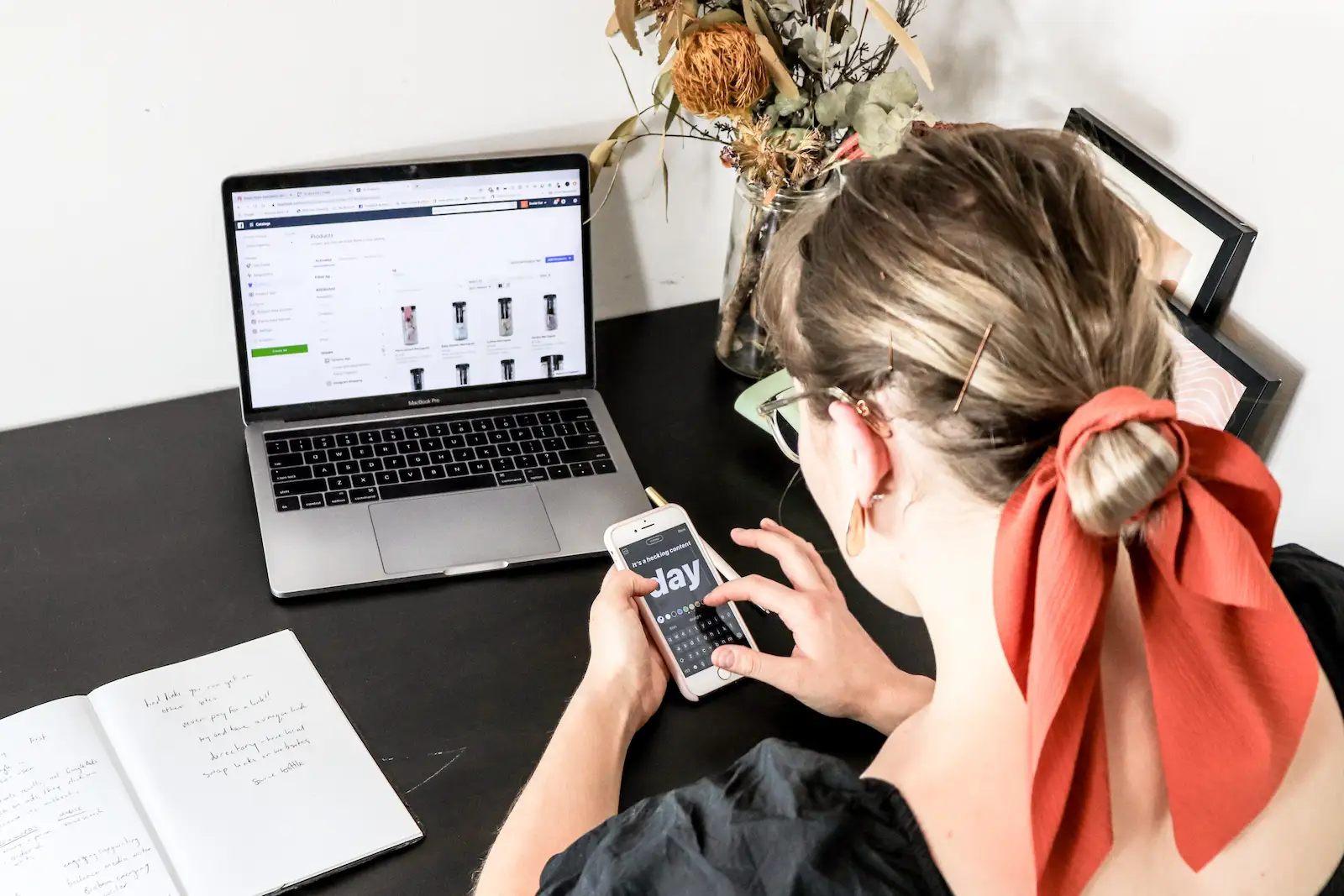
5 more tips for writing a business plan for a coworking space
Ready to get started with crafting the perfect business plan? Here are five more tips to help you create a cohesive plan for your coworking space – from start to finish.
1. Always start with your research
The research you do around the market and your competitors should be the basis of your entire business strategy. You can’t know where to open and who to target without understanding the market first.
Here’s a few questions you should be able to answer after doing your research:
- What is the size of the market?
- What is the growth trajectory?
- What are trends in the industry?
- What is the primary demographic that it serves?
- Who are your direct competitors?
- How big are they (number of members, locations and revenue)?
- Who do they serve?
- What is their messaging and positioning?
- How do they differentiate themselves?
Coworking Resources has a great comprehensive guide on how to conduct a competitive analysis specifically in the coworking industry that’s a great reference if you’re looking for a framework to start off with.
2. Crowdsource knowledge from the community
The wonderful thing about the coworking community is how willing people are to share their knowledge with one another.
If you’re feeling lost on where to start with your business plan, consider reaching out to a coworking operator who has opened a successful space in the past.
You can also look at other successful coworking businesses and take inspiration from them as to their:
- Business model
- Marketing tactics
- Products and services
Every space is different, but gathering insight from other coworking spaces that have been successful can be a great place to start.
3. Think about who is receiving the business plan and what is important to them
As you go through the process of creating a business plan, you may find yourself becoming unfocused. How can I include so much information in so little words?
Put yourself in the shoes of who is going to be receiving your plan.
Who are they? What do they care about? What information are they hoping to receive from your document?
Use this to help tailor your coworking business plan to fit their specific needs.
Pay special attention to the things that are going to drive business results including:
- Market research (is there room in the market to be successful)
- Competitor research (how saturated is the space and how will you differentiate yourself)
- Products and services (what is your business model and how will it generate revenue)
- Financial projections (is your business able to grow and scale over time)
Read your entire business plan from start to finish through the eyes of who it is intended for before submitting it.
4. Be conservative with your numbers
It’s easy to get excited with your numbers. You need to show that your business is going to succeed and you want the numbers to back it up.
The problem with overestimating projections is that it can set you up for a tremendous amount of stress later on if your business fails to meet expectations.
It’s best practice when creating a business plan to always be conservative with your numbers and remain realistic in your expectations. This includes:
- Financial forecasts
- Market size
This article outlines ten common mistakes people make when creating a business plan…including being unrealistic with numbers and forecasts.
It’s always better to underpromise and overdeliver.
5. Set measurable objectives
Throughout your business plan, you will want to make sure you are creating clear KPIs and objectives to drive your business forward.
One way of creating measurable objectives is by following the SMART goal framework. SMART goals are goals that are:
- Specific (narrow enough to be achieved)
- Measurable (quantitative)
- Attainable (realistic in the given time frame)
- Relevant (furthers your overall business goals)
- Time-based (can be measured in an amount of time)
Here’s how to apply the SMART goal framework to your coworking business plan.
Marketing Objective: Acquire 50 new hot desk users in the first 6 months
Management Objective: Hire a part time community manager in the first 60 days of opening
Measurable goals can help move your business forward and ensure you’re staying on track to achieve them.
Plan for success in your coworking business
At the end of the day, a plan will only get you so far. Focus on executing on the plan and remaining flexible in order to ensure you’re giving yourself the greatest opportunity to succeed.
Looking to start a coworking business and want to choose the best coworking software for your business? Learn more about Optix and how it can help you grow a successful coworking business by connecting with a member of our team today.
More in this collection

How to Start a Coworking Space in 2024

Virtual Mailboxes in Coworking Spaces: How to Get it Right in 2024

14 Best Coworking Websites to Get Listed On
How To Write A Bulletproof Coworking Space Business Plan

October 18, 2022
Adam Hoeksema
Hybrid work models are leaving offices bare all over the world, and the consequent effect on the prices of corporate real estate is leading savvy entrepreneurs to consider new options. Coworking space business models are emerging with a new range of approaches to providing remote workspaces that combine the comfort of the home with the functionality of the office, in a location that’s convenient for everyone.
Now is a good time to start figuring out how to start such a business, and if you’re serious about it, you’re going to need to do the groundwork. A coworking space business plan is an essential document to start building and will pave the way for you to secure your funding. It’ll also teach you a lot about the industry, the market, and how you’re going to be functioning in relation to both.
We’re going to show you a template for your very own coworking space business plan design in this article, which can serve as a checklist of all the research and documentation you’ll need to gather to get started. Before we go into that though, let’s look at why this kind of business is becoming so popular.
Why and How to Start a Coworking Space
With employers shifting to remote and hybrid models, you might think there’s a sudden increase in half-empty office buildings, and to some extent, you’d be right . Office demand is expected to decline significantly, and the majority next generation of companies to start up will certainly be factoring in a smaller physical workspace to their budgets and forecasts.
However, something still has to be done with all these empty floors, and for some entrepreneurs, this is an appealing prospect. At the worst of times, coworking spaces are less vulnerable to industry shifts, and with office real estate looking like such a good investment right now, this might be the perfect time to jump ahead with learning how to start a coworking space.
While some companies are pushing for a full return to the office, the workforce is resisting, and it looks like those companies that are earliest to embrace hybrid workspaces are the most likely to take advantage of the new normal. Many people prefer the flexibility and comfort that remote work provides, and many find that their role in the company does not require them to be physically present.

It’s also becoming more apparent that workers are even more productive when working from home. The combination of these factors results in a powerful demand for new working setups, and as companies necessarily compete to retain their most valuable talent, new workspaces are emerging.
As hybrid setups look like they will stick around for the long term, entrepreneurs are now making use of coworking spaces to reduce overheads for companies on real estate.
The benefits come from several angles. Combining the facilities of an office with the comfort of working in a casual environment, companies can rent coworking spaces in cities where they have high numbers of hybrid workers, providing them with a more accessible workplace that requires very little in the way of a commute.
This allows workers who may have busy homes to get some conducive space without heading all the way into the office. It also allows companies to bridge the gap between office and fully-remote workforces, saving costs on a more dispersed workforce while maintaining productive, shared facilities.
The applications for share workspaces are numerous, and there are several business models to consider. Before you get onto your business plan, it’s important to figure out which model you’ll be going with, and then how and where you’ll be funding it. Let’s go over that now.
The Coworking Space Business Model
The different types of business models can be broken down by the scale you plan to be working with. For small operations, you’ve got different options than larger ones, and each comes with its benefits and drawbacks. Here are some approaches you might want to take:
- For small-scale - Using repurposed space is one way to make use of some of those newly-empty buildings. They don’t have to be offices; they can be community buildings like churches or town halls. Partnerships are available in these instances, or you can rent or buy a space specifically.
Splitting the cost between you and another company can further reduce your overheads, and if you can find a complementary business to partner with, this can boost the profits for both. Consultancy firms may benefit from a stream of workers from the same industry sharing a space, and members of the space benefit from the ability to network with one another, too.
- For mid-scale - Empty office spaces are already set up for work; with a little renovation, you can make them into a combined office and coworking space, getting the best of both worlds and creating a functional floor that is relaxed and casual at the same time. Alternatively, you can design a venue for educational programs that companies will happily send their staff to take part in, meanwhile members benefit from the free seminars or lectures. Mid-scale coworking spaces sit in the bracket with the most diverse set of options. You can do a lot of the things in this range that you can’t do with smaller spaces, and you can create a lot of the benefits of a much larger enterprise but at a slightly smaller scale. Further, if you have long-term plans to grow, you’ll be in a position to replicate the successes of this company in other places, which is where large-scale investment will come in.
- Large-scale - Any of the above can be created in number, spread around in different cities, and marketed to companies of all kinds. If you are ambitious and you want to start building a large company (and you can get funding for it), this might be the ultimate goal for your coworking business. Early adopters will benefit from the largest share of the new market .
These are just a handful of directions that you could take for your business, but whichever you choose will need to be attractive enough to funders, which is where your business plan will come in. Before we go over that, let’s recap the standard sources of capital for new ventures.
Source your Funding for your Coworking Space
There are three main sources of funds for new companies, and the source or sources you choose will depend on how much you need, how quickly, and what you’re willing to contribute.
- Bootstrapping – this is money off your own back. Either from your savings, from your main job, or from maxing out your credit cards, this is one way to take on the full financial responsibility yourself. This is generally a slower process, and only provides capital for smaller ventures (unless you’re quite wealthy), but the perks are significant. Bootstrapping your company allows you to maintain full equity, and therefore full control of the direction of your project. You’re not going to be at the mercy of shareholders, and you won’t have lenders on your back to return the money (credit card companies excluded).
- Banks – Banks are often happy to dish out substantial capital to new and attractive businesses, particularly because they will secure the loan to your private assets. This means that if the company fails, they still get their money back, and that’s one of the significant drawbacks of taking this route. Perks include the speed and the sheer amount of capital they can provide, as well as the fact that you’ll keep your equity. Just remember that you’ll be on the hook, regardless of the financial state of the company.
- Investors – There are numerous types of investors, from pre-seed to seed, through Angel, to Venture Capitalists, and everything in-between. The principle is similar for each of them, and the level you choose will depend on the stage of funding you’re looking for. Essentially investors will be likely to take some share of your company in exchange for capital – the more capital, the higher the share – and the financial risk will be on them. Some investors will have valuable experience in the industry, so you may be able to gain much more from finding the right person, but you will have to appease them as shareholders as the company grows.
While these are the three main types of funding, it’s worth keeping an eye out for grants for new businesses. It’s a good idea to have an understanding of the amount you’ll be looking for before you get started, but if you’re still not sure how much you’re going to benefit from drawing up a coworking space business plan.
A Template for your Coworking Space Business Plan
The business plan for most new ventures follows a standard format that can be used as a template. A business plan is much more than just a record of your company docs and data; it’s a comprehensive study into the health and prognosis of your business.
The pages of a business plan are typically presented in the order described below, however, they don’t need to be completed sequentially, and some may be more supportive to others if researched and completed in a different order. Once it’s done, the document will read as follows:
- Executive Summary – This will be a general overview of the document as it stands. A brief introduction to the company, its mission, and the contents of your coworking space business plan to follow. Obviously, you can’t complete this page until the rest of the document is done, so you’ll likely save this page for last.
- Market analysis – This page is next, and should paint a detailed and accurate picture of where your company belongs in the industry. To complete this section of the document, you’ll need to do your market research thoroughly, and understand who and where your competition is. This page needs to show investors that you understand the coworking space concept, the industry as it is, and its future. It then needs to explain to the reader exactly how you plan to take your share of the market and hold it. This is the page where your ideal customer will be described and backed up by the market data you have gathered in your research phase. This page and its data, when complete, will segue neatly into how your company will meet its market in the next section.
- Company description – Here, you’re going to be describing what you’re offering that directly meets the needs of those ideal customers you’ve identified. Explain your plan of action, and how your approach settles into a niche of its own and does the job better than your competition. The goal of this section is to stand out among the competition, in whichever way you can. Maybe you’ll be cheaper than them, or provide a wider range of services. Whatever it is you do differently needs to be highlighted here and depicted as a selling factor to your customers.
- Organizational structure – This page will introduce the key players in your company and how the hierarchy is laid out. This is a good place to expand upon some of the elements in the company description and point out how your management or administration talent is going to help you take on the industry. Where possible, include resumes and photos of your most relevant team, and explain how each individual’s contribution will push your company towards its goals. This page is a brief overview of your top talent, but don’t overdo it with the accolades and enthusiasm. As with everything in this document, you need to be accurate – it’s not a sales pitch.
- Products and services – This page is heavily dependent on the business model you’re choosing. A larger coworking space may have talks, training, consultancy services, etc. These will all need to be listed, along with the price and the way they will be arranged. Membership tiers, discounts, and other key components of the revenue streams you’ll be expecting need to be laid out in detail, and if your space will be selling any products, even )coffee and cookies!) itemize them here with their price.
- Sales and Marketing – Now you’re going to describe the strategies you’ve devised to reach these customers. You’ve laid out your market, and you’ve explained how your company can help them, and now it’s time to describe the bridges you’re going to build to find them and introduce them to your brand. Identify the media channels you will use, describe your sales funnel as it relates to your demographics, and cover touchpoints in as much detail as possible to show that you understand the market well and how to approach it.
- Financial projections – Now we come to the meat of the document. Many investors will skip to this page early, and for good reason. This page is a testament to how well you know your business. It’s going to act as a litmus test for investors to judge how reliable you are as a partner. Your projections need to be based on real figures, and they need to be honest. If you’re trying to market your company to investors by exaggerating its prospects in the industry, you’re going to make yourself look dishonest or at best incompetent. Detailed and realistic projections come from detailed and realistic financial documents, so these need to be well-researched and presentable on both counts.
For help with this, at ProjectionHub we have over 70 different industry-specific projection templates including a template just for coworking spaces . Using a professional-grade template can make all the difference to the presentation of your most important data when it comes to appealing to investors or lenders.

Make use of this template as a checklist that can be used to go through your company research and documentation and form a profile of your project that can guide you into the industry. When completed with care and attention, it will make the difference between acceptance and rejection of any sources of funding you may request.
A coworking space provides companies and their workers with a middle-ground that takes the benefits of remote work and combines it with the facilities of the office. The great thing about such a space is that it can house multiple companies’ employees, bringing networking opportunities to members, and creating resilience against industry shifts by providing a diversity of bodies.
Setting up a coworking space business plan should be one of the earliest steps in this venture, as it represents the transitional moment between idea and reality, and solidifies your project with a genuine path to success.
Forming a business plan shows you exactly how to set up a coworking space, as it involves deep market and financial research, and is as much a process of education as it is of documentation. A detailed plan will display your company in a good light and detail exactly how your investors will get their ROI from supporting you, as well as bring you accurate insights into how to get started.
About the Author
Adam is the Co-founder of ProjectionHub which helps entrepreneurs create financial projections for potential investors, lenders and internal business planning. Since 2012, over 50,000 entrepreneurs from around the world have used ProjectionHub to help create financial projections.
Other Stories to Check out
Why does the sba want to take my home as collateral.
Why does the SBA require your home as collateral for loans? This guide explains how business assets are valued and why home equity is often needed to secure SBA loans, ensuring lender protection and loan feasibility.
What if I Sell my Home that is Pledged as Collateral on an SBA Loan?
What happens if you sell your home that's used as collateral for an SBA loan? Learn the steps to coordinate with your lender and explore your options to ensure a smooth sale and compliance with loan terms.
Finding the Perfect Small Business Lender
How do you find the perfect SBA lender for your small business? This guide discusses the complexities of the SBA lending landscape, the importance of matching your business needs with a lender's preferences, and how tools like the SBA Lender Finder can streamline your search for the right financing partner.
Have some questions? Let us know and we'll be in touch.
Powered by Kisi

The WeWork Business Model
Despite very public ups and downs over the last few years, WeWork remains at the forefront of the shared workspace industry. By quickly becoming the driving force behind the industry's growth—and thriving despite a worldwide pandemic—WeWork's success proves definitively that coworking is the new normal. At only a little more than a decade old, the brand is poised to keep growing in the coming years, especially with new CEO Sandeep Mathrani.
Today, WeWork is still shaking up the industry at every turn. Over the past few years, it has acquired tech startups such as office sign-in system Welkio and physical data software company Euclid in a move toward domination in the business sphere. The brand's app, WeWork On Demand, expanded in late 2020 and is now available in 17 major U.S. cities. And despite a disastrous downfall under founder Adam Neumann, WeWork is now on track to be profitable once again by the end of 2021.
If there is anything that the controversial story of WeWork can teach us, is that resilience is key in growing a business, as recently revealed an early strategy of WeWork was to walk into Starbucks and pitch to people working on their laptops .
WeWork's unprecedented success has prompted dozens of questions: Who are the investors behind WeWork? How does WeWork make money? What are the financial risks associated with its business model? Why do landlords decide to take WeWork as a tenant as opposed to leasing directly? The answers might surprise you.
What is WeWork?
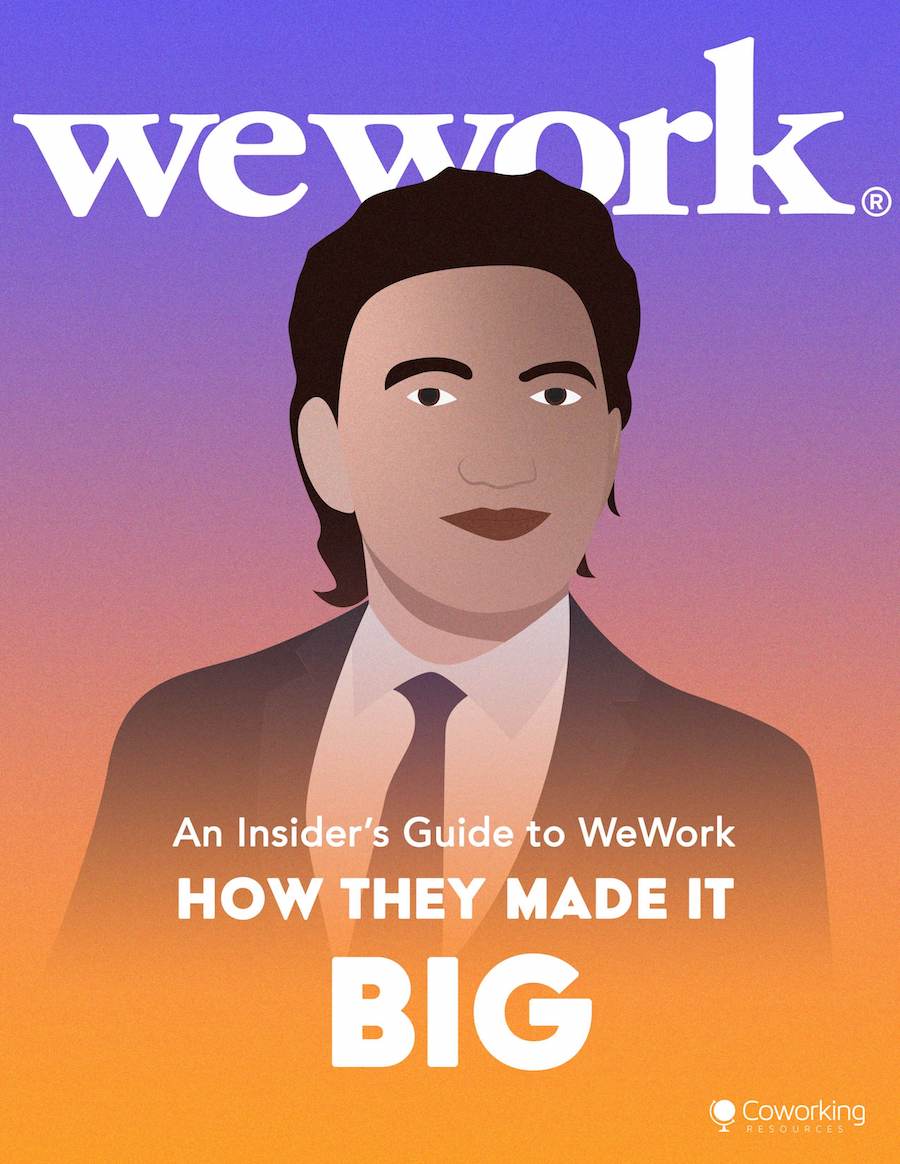
WeWork was founded in New York in 2010 with a goal to offer coworking spaces to entrepreneurs, startup companies, freelancers, and even larger enterprises . The company grew rapidly since its establishment, making it one of the largest and most visible coworking chains in the world. It now has thousands of employees and over 800 locations worldwide, including outposts in 40 of U.S. cities and 32 countries, like Brazil, Germany, and Thailand.
What are its membership options?

Flexibility is key in WeWork’s business model: They ensure that clients no longer need to worry about long-term leases. The company offers six levels of membership: All Access, On Demand, dedicated desks, small private offices, office suites, and custom full-floor offices.
For single workers, the all-access subscription option provides access to open workspaces across the world, so members can show up whenever they wish, pick any available seat in a common area, and start working immediately. Alternatively, the on-demand option allows you to pay only when you use a space, like a desk or a conference room, on a day-to-day or hourly basis. For those who want a little more stability, WeWork offers dedicated desks that they lease to one client or one business only.
Teams and businesses of all sizes can also opt for private offices, which come equipped with furniture and can accommodate dozens of workers as businesses grow. The most personalized option is a custom build-out, which presents maximum freedom for groups that want to customize their workspace with features like CEO suites, conference rooms, or labs. WeWork scouts buildings and then transforms them, for businesses big and small: They've already done this for Facebook, Microsoft, HSBC, and Deloitte.
Who are the investors behind WeWork?
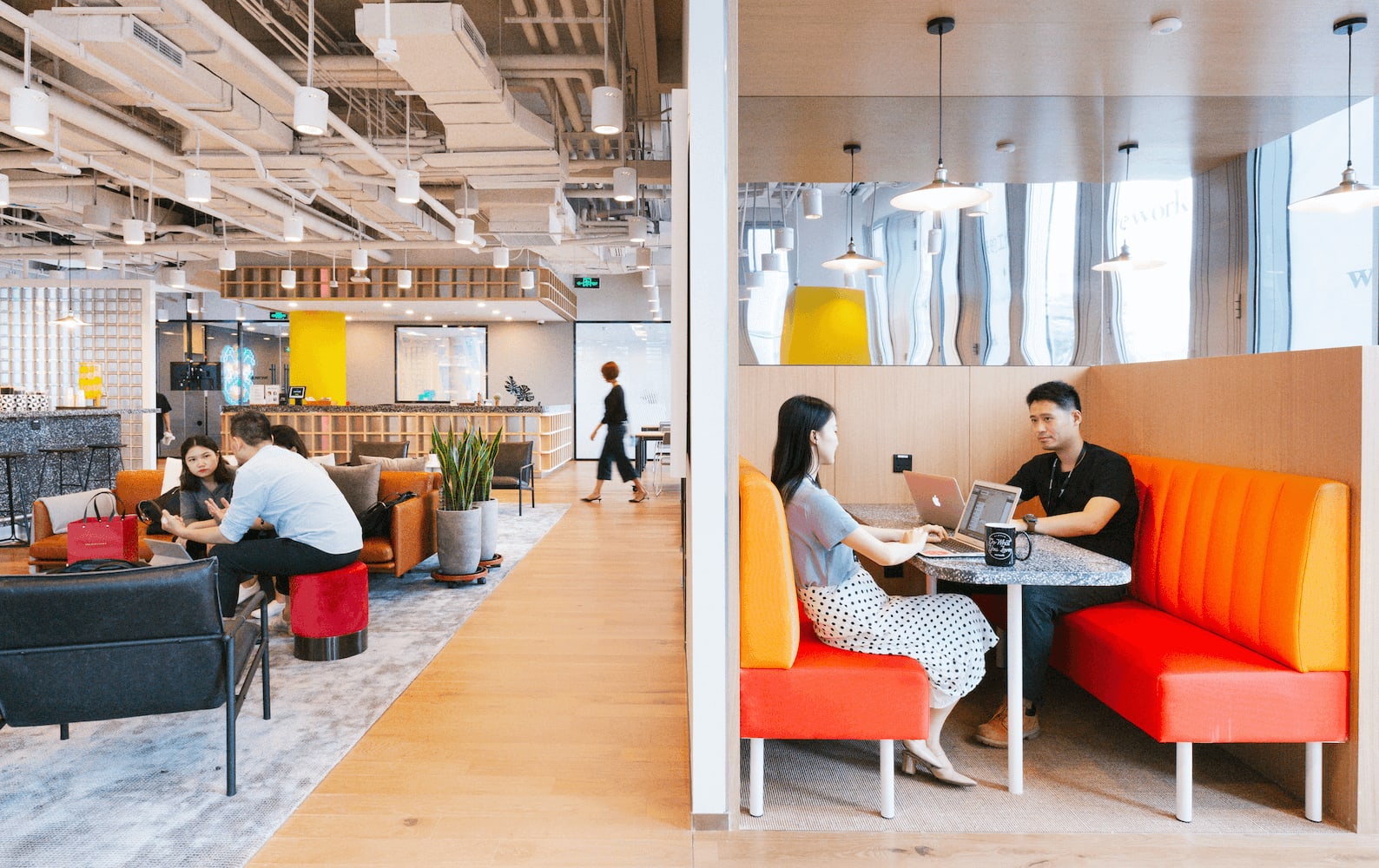
WeWork's investors have included a number of global entities, including holding conglomerate SoftBank, private equity firm Hony Capital, and real estate developer Greenland Holdings. In August 2017, SoftBank and its founder, Masayoshi Son, poured a massive $4.4 billion investment into WeWork. This included $3 billion for WeWork itself, namely through primary investment and the purchase of existing shares, and $1.4 billion dedicated to WeWork’s expansion into the Asian market: WeWork China, WeWork Japan, and WeWork Pacific. In August 2018, WeWork announced yet another $1 billion in funds from SoftBank.
As of 2019, WeWork had raised nearly $47 billion in private equity and venture capital funding in the years since its founding. The immense interest by Asian companies such as Hony Capital, Legend Holdings, and China Oceanwide represents WeWork’s promising expansion into Eastern markets. Apart from its Asian investors, Western companies like Goldman Sachs, J.P. Morgan, and T. Rowe Price have also invested in the Manhattan-based WeWork. Unfortunately, when founder Adam Neumann greatly mismanaged the company in late 2019, WeWork lost its chance at an IPO as its valuation dropped more than 90% .
After a very public demise under Neumann's leadership, the company has made an unexpected turnaround. CEO Sandeep Mathrani, who took over in February 2020, is now looking towards a possible IPO for the company once again.
How does WeWork make money?
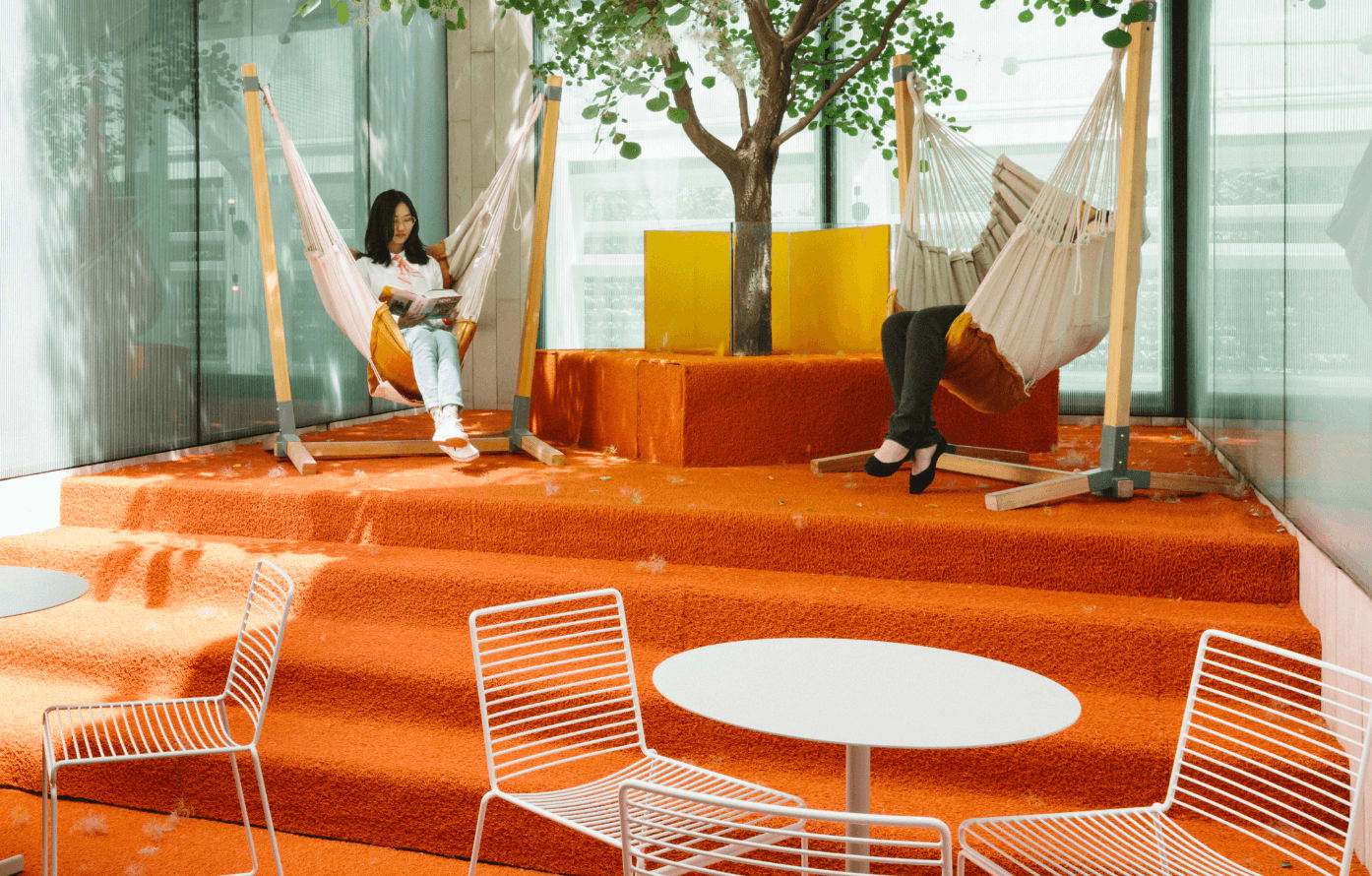
In a nutshell, WeWork rents buildings from property owners at one price and then rents them out to clients at higher prices. Not all of the locations WeWork uses are similarly priced; buying up real estate in Baltimore or Nashville, for example, is cheaper than in New York City. These price discrepancies help keep WeWork's overhead from getting too high.
After renting the buildings, WeWork transforms them, updating everything inside and adding features like cafés, offices, and community spaces. Once finished, the company rents out the spaces for significantly higher prices. Apart from making money on rent, WeWork also provides additional services for a fee, such as partnerships with local businesses, car rentals, and other à la carte amenities.
What are the financial risks of WeWork’s business model?

WeWork pays landlords a huge amount of money and sinks even more into cosmetic updates, so it relies heavily on the revenue from renting to its clients to cover its high costs. If a location does not onboard enough clients to fill the available spaces or if the client's rental income does not cover WeWork's own rent, the company finds itself in a risky position.
As of 2019, WeWork had signed $18 billion worth of leases over the next few years and committed to renting 14 million square feet of office space worldwide. The company had written off massive losses as the cost of massive growth and valued itself at $47 billion at its peak. After a rocky few months in late 2019 and early 2020, today the company is back in the black and sees a promising future ahead. It's important to note that loss periods are not abnormal for startups, especially in the case of WeWork's unusual business model.
Why do landlords take WeWork as a tenant?

A look into the future of Coworking Spaces
The co-working market is about to be disrupted. Let's see how

From the perspective of a landlord , WeWork's business model makes sense despite the high fixed costs and long-term lease agreements. For commercial property owners and managers, it's easier to have one contract with a single large company for a fixed period than to find and lease to several different tenants for shorter periods, especially if the building is in a challenging real estate market. Overall, the managing efforts and negotiation processes are much less troublesome with one tenant, and WeWork usually leases properties for 10 years. This takes less time and resources away from the building owner while taking care of the biggest concern for landlords—vacancy rates. WeWork has also garnered enormous media exposure by attracting young, innovative businesses and curating established corporate clients.
What happened to WeWork under Adam Neumann's leadership?
There’s no arguing that WeWork , which was managing millions of square feet of office space as of late 2019, has grown astronomically since its launch in 2010.
Once one of the fastest-growing companies in the world, WeWork was on top of the coworking food chain. In late 2019, a series of shocking events surrounding Neumann's leadership decisions put the future of the company and its massive workforce in question, along with the general perception of the coworking industry and its implications on the commercial real estate market.
Below, we take a look at how and why this coworking giant went from being one of the most highly valued startups to contemplating bankruptcy in the space of 6 weeks, before Mathrani swooped in and helped bring the company back to stability in 2020.
From WeWork to The We Company
Valued at $47 billion (Softbank being the largest investor), the company rebranded from WeWork to “The We Company” early in 2019. According to reports, the decision was made to help the firm grow and reach a wider audience.
Many business journals and analysts questioned the brand's ability to turn a profit after it lost more than $2 billion in 2018. For years, industry experts in the commercial real estate and tech industry questioned the vacancy rates of WeWork locations and the overall viability of the business model amid its rapid expansion into co-living, education, childcare, and several other sectors.
What Went Wong?
In August 2019, The We Company submitted its S-1 filing in preparation for an IPO (initial public offering). Almost immediately, headlines and reactions from tech bloggers and economics experts alike criticized the prospectus and the company for its complex corporate structure, questionable business practices, negative financial projections, and inflated language.
After the filing, the company faced more scrutiny of its leadership and finances from both investors and potential shareholders. Conflicts of interest were revealed in CEO and co-founder Adam Neumann’s ownership of the “We” trademark and several stakes of the company’s real estate holdings, raising red flags among stakeholders, employees, and observers alike.
By the second week after the IPO filing, these revelations and criticisms of the company had severely damaged the outlook of the IPO, putting the company in a very fragile position along with Softbank’s $10 billion investment. Amid reports of self-dealing, sexism, and unprofessional behavior, Neumann eventually had to step down from his role as CEO and chair of The We Company in September 2019, just a few days after the company decided to delay its IPO.
As a result, WeWork’s value plummeted from $47 billion to just over $8 billion.
Adam Neumann steps down
Neumann’s reported behavior and business practices were at the heart of much of the criticisms the company received in the press. The fact that he personally trademarked the word 'We' and licensed the use of the word to his own company for $5.9 million raised red flags among executives and business experts, prompting a rollback of this arrangement soon after it came to light.
Neumann was also reported to have frequently encouraged employees to drink shots of tequila and smoke marijuana at work. This carefree attitude from the CEO, coupled with reports of an increasing lack of gender diversity among the company’s managerial staff and high-level executives, severely damaged the public perception of the company culture. Even before the planned IPO, WeWork was heavily criticized for its lack of female board members or decision-makers in general.
WeWork’s valuation plummeted more and more with every negative report about WeWork’s corporate governance practices and Neumann’s behavior, further disconcerting investors and delaying the official IPO. The turning point occurred after marijuana was found on Neumann’s company jet after it landed in Japan (where it is illegal). Shortly after this incident Neumann stepped down as CEO and drastically reduced his voting power on the board from 10:1 to 3:1. As co-founder of the company, he now only retains a non-executive chair on the board of directors, but no controlling stake in the company.
Though many company decision-makers sought to quell investor’s fears and save the IPO by removing Neumann, his exit package drew even more criticism. By leaving WeWork, the 40-year-old entrepreneur walked away with more than $1.7 billion by selling his shares to SoftBank, earning a sizeable consulting fee in the process.
SoftBank, WeWork’s biggest investor, took control of the company, with former Amazon exec Sebastian Gunningham and CFO Artie Minson filling the CEO position temporarily. Its top investors and executives re-evaluated WeWork’s path to profitability and implemented more conservative strategies to attain positive revenue in conjunction with the company’s drastically reduced valuation. These strategies include cost-saving measures like laying off of over 2,000 employees worldwide, the sale of several companies that WeWork previously acquired, and an immediate halting of the aggressive expansion of the company into new markets. Upon stepping into the CEO role in February 2020, Mathrani has continued building the company back up by cutting costs and righting the company culture.
What this means to the coworking industry
This scaling back of one of the world’s fastest-growing companies and its IPO troubles bear many similarities to large tech businesses facing the ultimate test of going public. Many coworking space operators are worried about how WeWork’s failed IPO will affect the public’s outlook on the industry.
Though recent events may be disheartening to potential investors in coworking spaces, studies show that WeWork barely scratched 2% market share in the flexible office space sector, with many of its clients being large corporations like Google, Microsoft, and Salesforce. As a whole, the coworking industry has grown steadily year-over-year and demand for local, independent flexible workspaces with strong communities remains stable, and demand is expected to rise again after the COVID-19 pandemic.
If anything, the controversies surrounding WeWork serve as an example to other expanding coworking brands, highlighting the necessity of creating a sustainable company culture and a clear path to profitability in order to earn the trust of members and stakeholders alike.

Carlo Belloni
Carlo is the Project Manager and SEO Specialist at Kisi.
Save your community manager 41 hours each week—learn how The Yard did it with cloud-based access control.
Most Viewed

Largest Coworking Companies
Alberto Di Risio

Thriving In Smaller Markets

Access Control vs Smart Locks

Offering More Value

Protecting Network Security

Are Coworking Spaces Safe?
The Guide to Make Your Space More Profitable
Including interviews with experts and consultants.
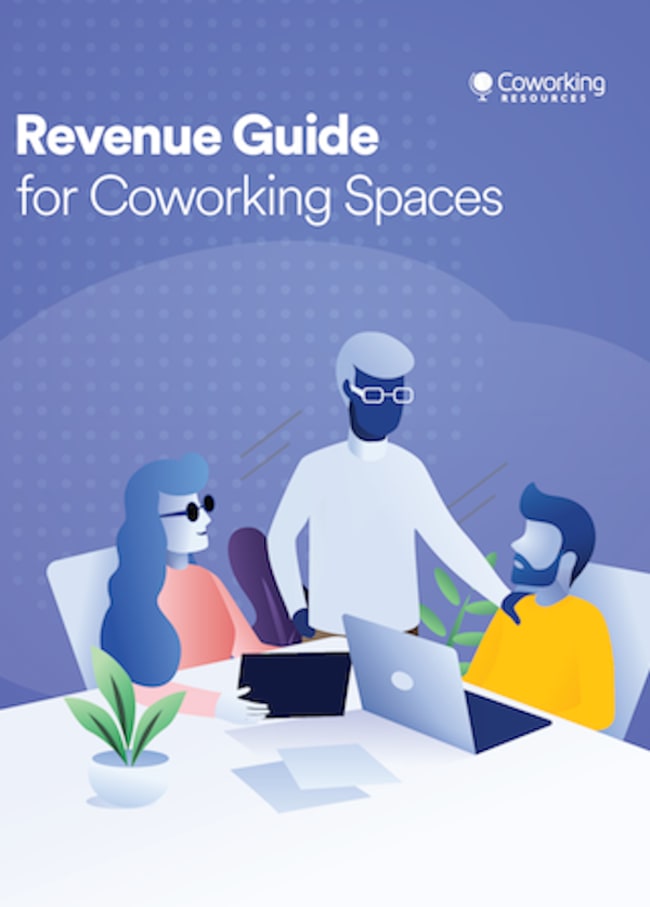
Related Articles
Coworking NYC Daily Pass
24-Hour Coworking House Rules
Lure Clients into Monthly Sub
Get expert advice on setting up and scaling your space
Free access to our best guides, industry insights and more.
We use cookies to enhance your experience and for marketing purposes. By clicking “accept”, you agree to this use.

IMAGES
VIDEO
COMMENTS
7. Coworking Business Model Template. There are tons of helpful coworking business model canvases out there that are helpful to estimate your startup costs, brainstorm partnerships, cater towards your target audience, and build your business. You can save this checklist, as well, to help you start planning your space.
The Plan. Our coworking business plan is designed to encapsulate all key facets essential for a robust strategy. It includes detailed descriptions of the coworking space's operations, marketing strategies, market context, competitors, leadership team, and financial expectations. Executive Summary: Summarizes the coworking space's business ...
Plan Our marketing campaign is expected to generate approximately $5.4 million in the first year, $7.5 million in year two, $9.3 million in year three, $11.5 million in year four, and $14.3 million in year five. Gross margin in year one is 39%; in year two is 46%; in year three is 48%; in.
Traditionally, a marketing plan includes the four P's: Product, Price, Place, and Promotion. For a coworking space business plan, your marketing strategy should include the following: Product: In the product section, you should reiterate the type of coworking space company that you documented in your company overview.
If you are planning to start a new Co-Working space business, the first thing you will need is a business plan. Use our sample coworking space business plan created using upmetrics business plan software to start writing your business plan in no time.. Before you start writing your business plan for your new co-working space business, spend as much time as you can reading through some examples ...
Coworking Business Plan Checklist DEFINE YOUR VISION Write down the reasons you want to open a coworking space (i.e. to create your own startup, to make money, to foster a community, to solve a problem, etc…) Research the mission of other coworking companies and highlight your likes and dislikes Identify your target audience
A coworking business plan is not just a document; it's a strategic blueprint that outlines how to establish and operate a coworking space. It serves as a roadmap for achieving business goals, securing financing, and guiding daily operations. Understanding the fundamentals of the coworking space business model is key to developing a successful ...
This includes offering up-to-date statistics and pinpointing emerging trends in the coworking sector, as illustrated in our coworking space business plan template. Then, you need to articulate your business concept effectively. This encompasses your vision, identifying your target market (such as freelancers, startups, remote workers, or small ...
Office Design/Build: $200,000. Marketing and Advertising: $50,000. Inventory and Supplies: $50,000. Three Months Of Overhead Expenses (Rent, Salaries, Utilities): $100,000. Working Capital: $100,000. Easily complete your Coworking Space business plan! Download the Coworking Space business plan template (including a customizable financial model ...
Sales Manual (including the Coworking Agreement). Venue hire/ external events manual. Communication manual. Community manual (including the House Rules). 3. Strategy & timeline for the launch of your coworking business. Prepare to go to market three months before the opening and three months after.
Features of our Coworking Space Business Plan Template: Market Analysis: Understand your target market's needs and preferences. Business Model: Define unique services and identify target clientele. Financial Projections: Predict revenue, expenses, and profitability. Marketing Strategy: Develop effective plans to promote quality services.
A well-written business plan will help you clearly identify your strategy, potential roadblocks and required resources to name a few. Remember that each segment of your coworking space business plan is interdependent on the next and will serve as building blocks for one another. 3.
Executive Summary Business Name: Creative Hub Co-Working Space Location: Austin, Texas Website: www.creativehub.com Contact Info Co-Working Space Business Plan Template + Pdf - Just Business Plan Download Free Co-Working Space Business Plan Template + Pdf
The total cost for leasing facility for the business - $450,000. The total cost for facility remodeling to fit into the type of co - working space facility - $150,000. Phone and utility deposits - $3,500. Operational cost for the first 3 months (salaries of employees, payments of bills et al) - $140,000.
How to write the BEST coworking business plan. Let's look at each section and break down how to write the very best business plan for the coworking industry. 1. Executive Summary. The executive summary is a one-page overview that summarizes your entire business plan at a high level.
A coworking space business plan is an essential document to start building and will pave the way for you to secure your funding. It'll also teach you a lot about the industry, the market, and how you're going to be functioning in relation to both. We're going to show you a template for your very own coworking space business plan design in ...
The WeWork Business Model. Despite very public ups and downs over the last few years, WeWork remains at the forefront of the shared workspace industry. By quickly becoming the driving force behind the industry's growth—and thriving despite a worldwide pandemic—WeWork's success proves definitively that coworking is the new normal.
II. Developing Your Business Plan Structure: A robust business plan typically includes the following sections: Executive Summary: A concise overview of your business, highlighting key aspects and your goals. (Write this LAST, once you've completed the rest of the plan.) Company Description: Detail your coworking space's mission, vision, and legal
icient revenue in order to be sustainable.To create your co-working space business model, you have to know some basics of the customer segments, marketing, key suppliers, resources and activities, financials, revenue strea. , as well as the costs associated with it.Common mistake among business owners: Failing.